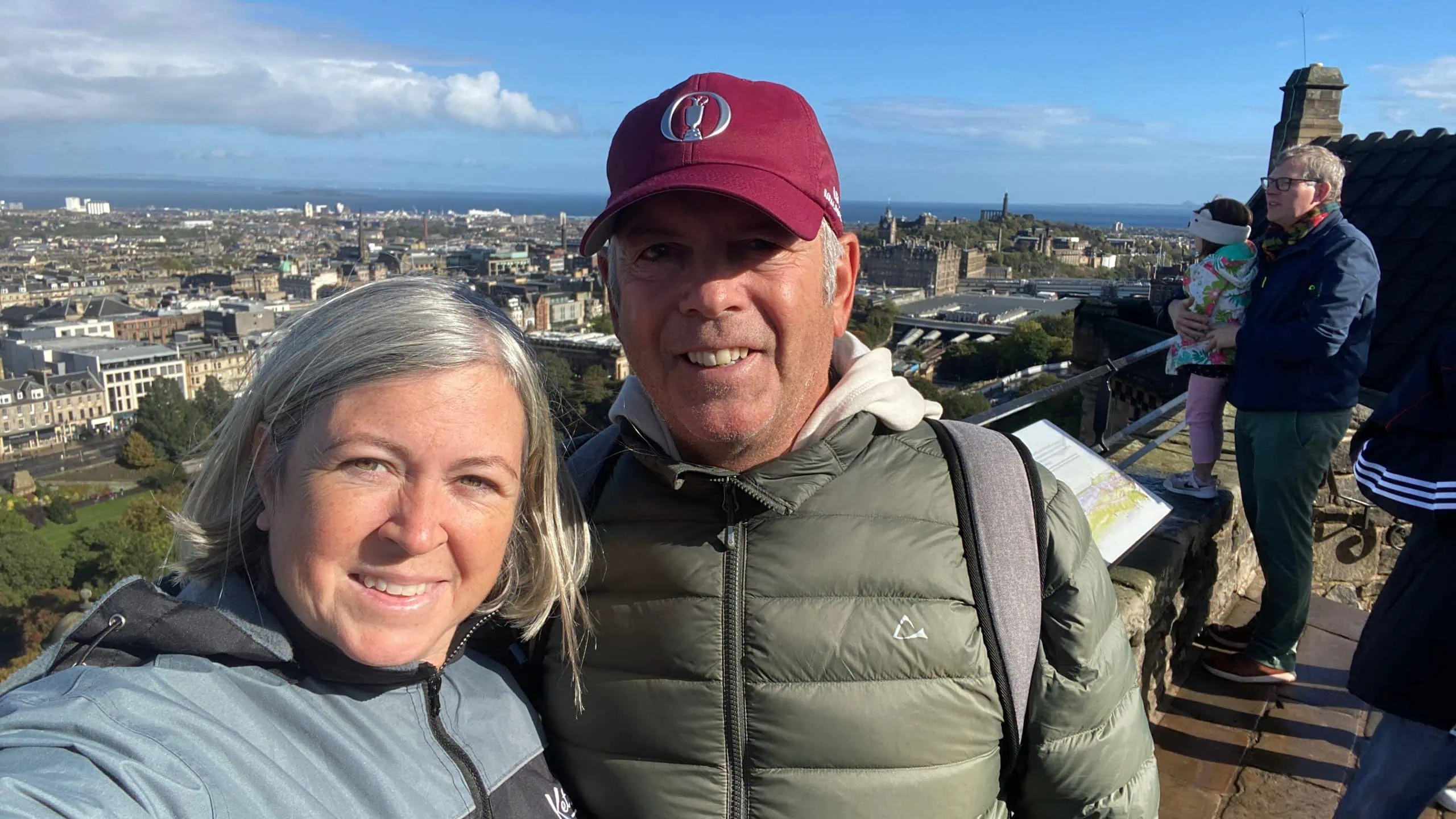Best Things to Do In Edinburgh Scotland

Top Places To Visit In Edinburgh
Although it is a relatively small capital city, Edinburgh is one of those places that immediately draws you in. When walking through the Old Town, surrounded by Gothic and Medieval style buildings, and navigating the narrow cobblestone streets, you can feel the history permeating everywhere.
We still remember our first evening there, exploring the small streets, finding a cozy pub for dinner, and realizing just how much character this city has. We spent several days here enjoying all the magic and charm this capital has to offer. Here are some of the best things to do in Edinburgh that made our visit one to remember.
Highlights of Edinburgh
✅ Quaint cobblestone streets with interesting architecture and laneways to explore
✅ A large park centrally located and perfect for hiking and amazing views
✅ Warm and inviting pubs and restaurants with Scottish hospitality
CHECK OUT OUR TOP TRAVEL RESOURCES
✦ Find superior accommodations on Expedia.com or Booking.com
✦ Book your rental car wth Discover Cars
Edinburgh Castle
Sitting high on Castle Rock, Edinburgh Castle overlooks the city with incredible views in every direction. From the outside, it looks like a fortress, but once you pass through the gates, it feels like a small city of its own.
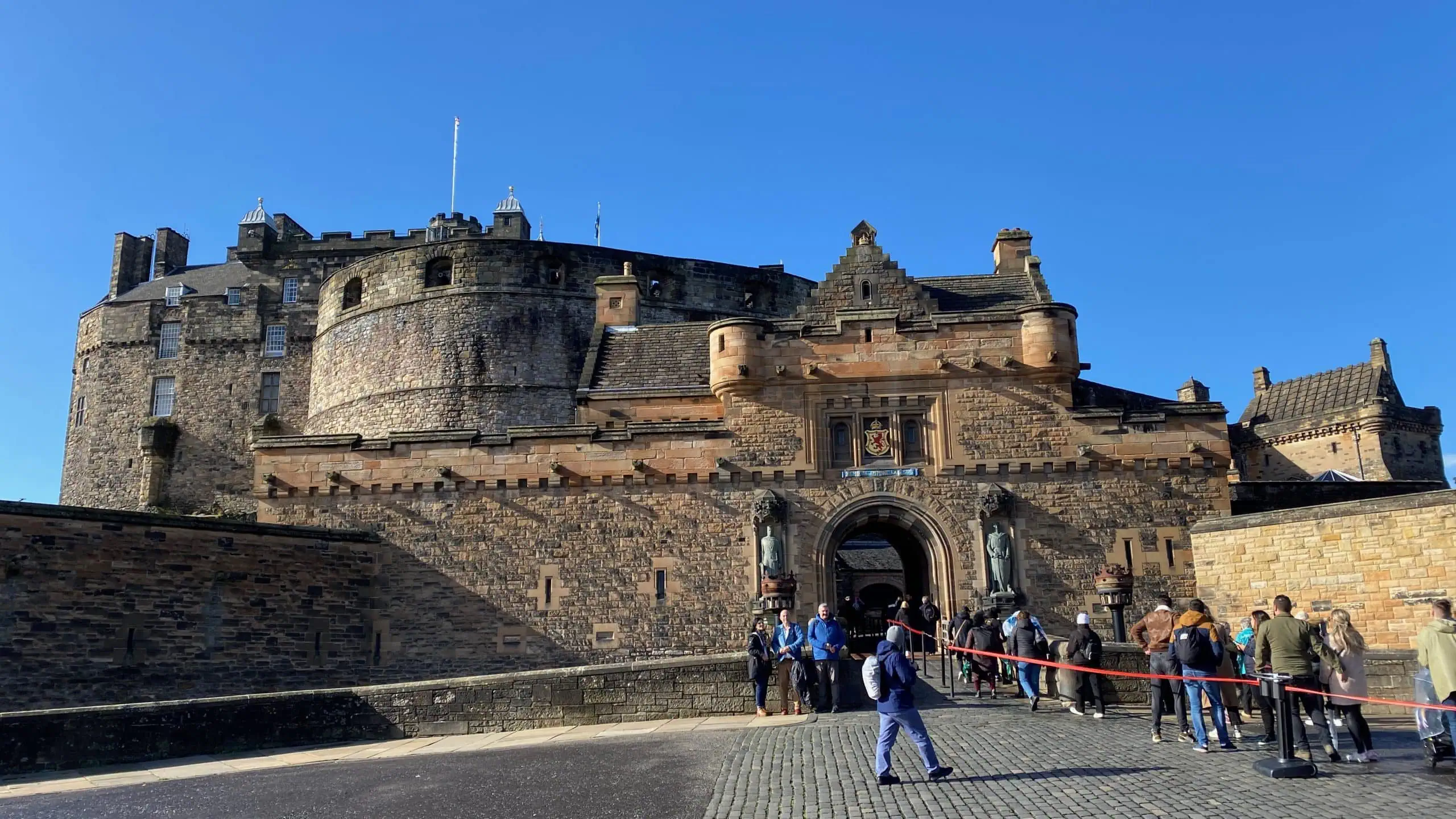
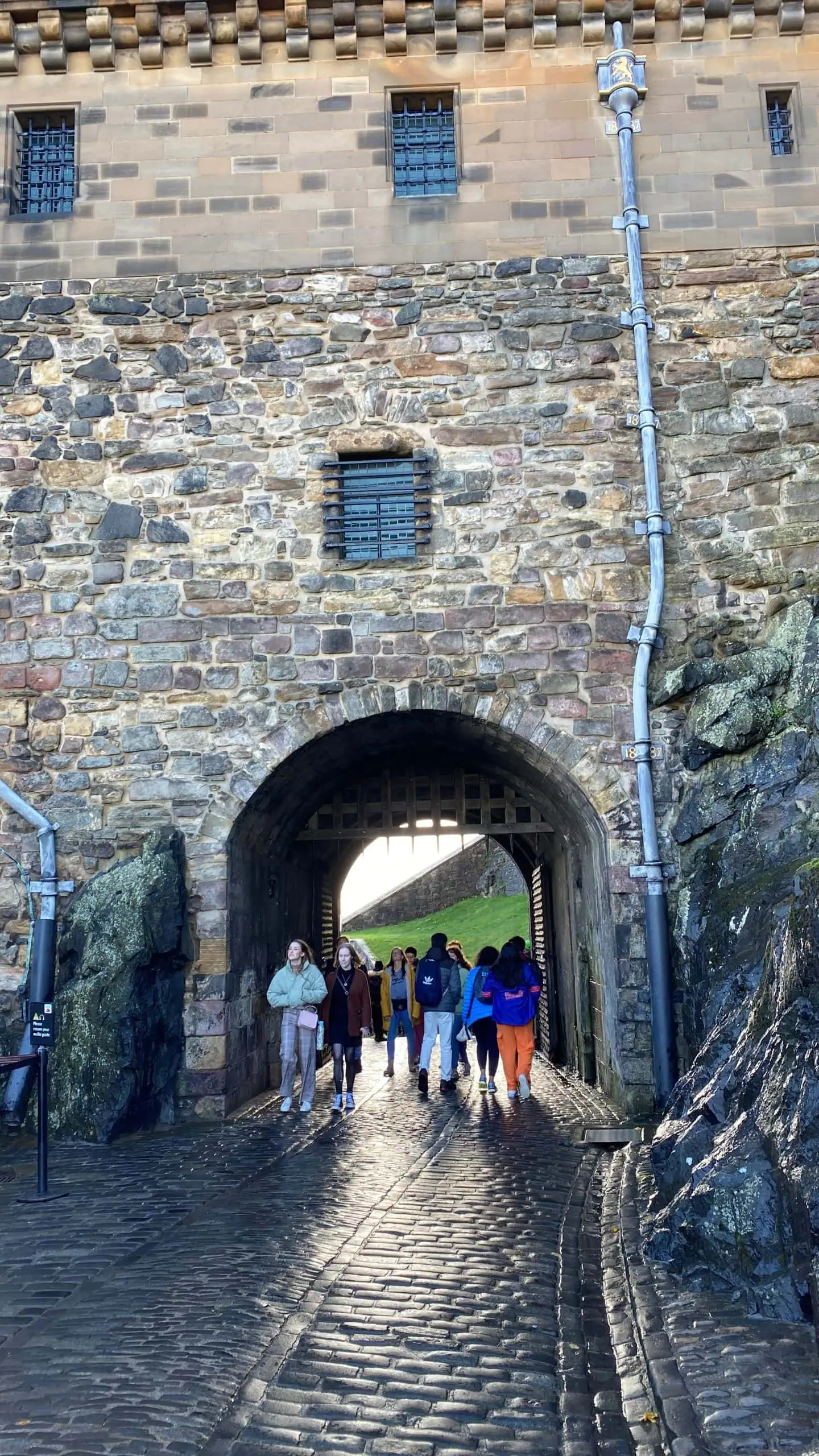
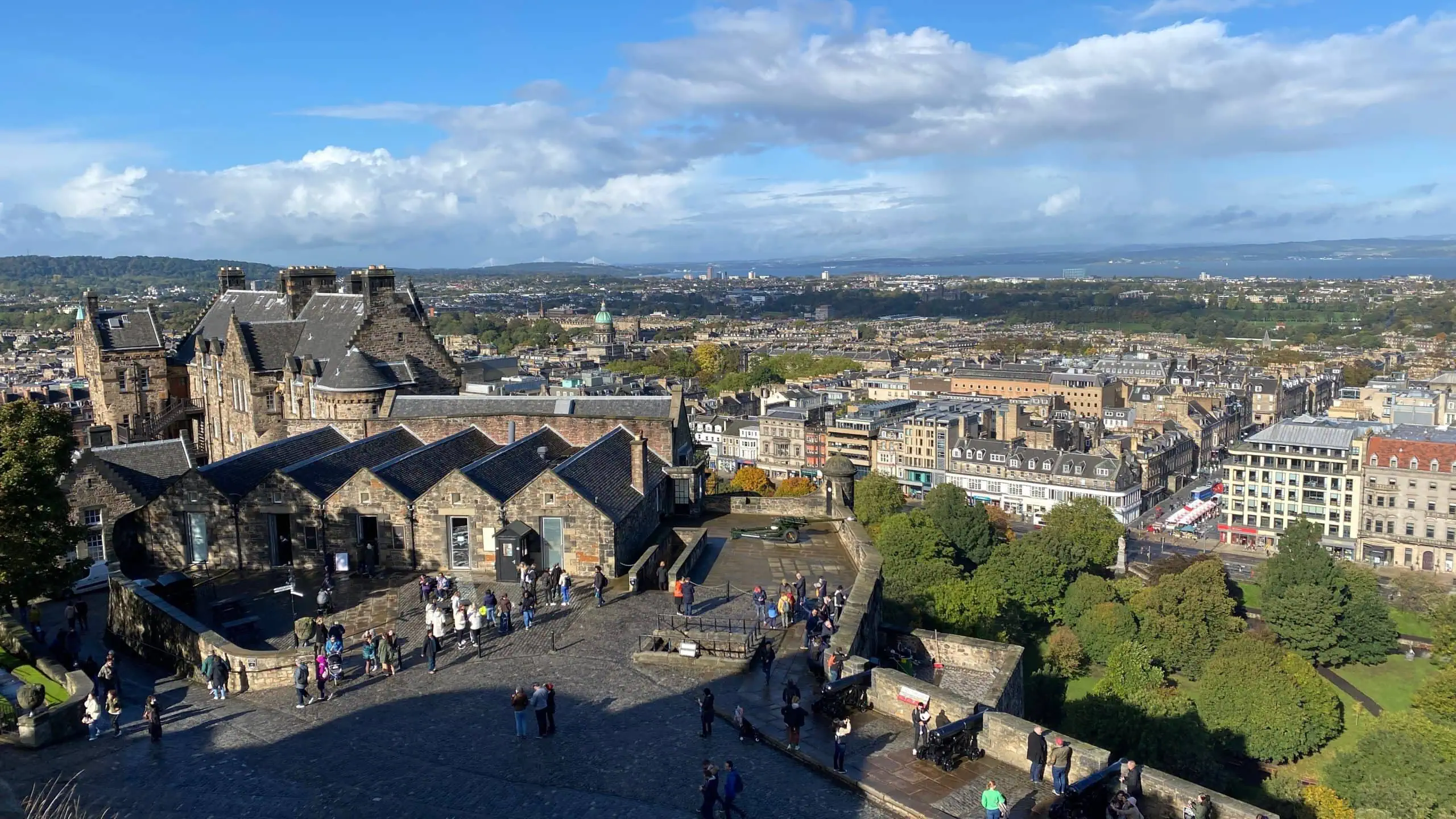
There are buildings from many different periods, royal apartments, military barracks, chapels, and museums, each telling part of Scotland’s long history. We found this a similar use of space to the War Museum at the St Elmo Fort in Valletta, Malta.
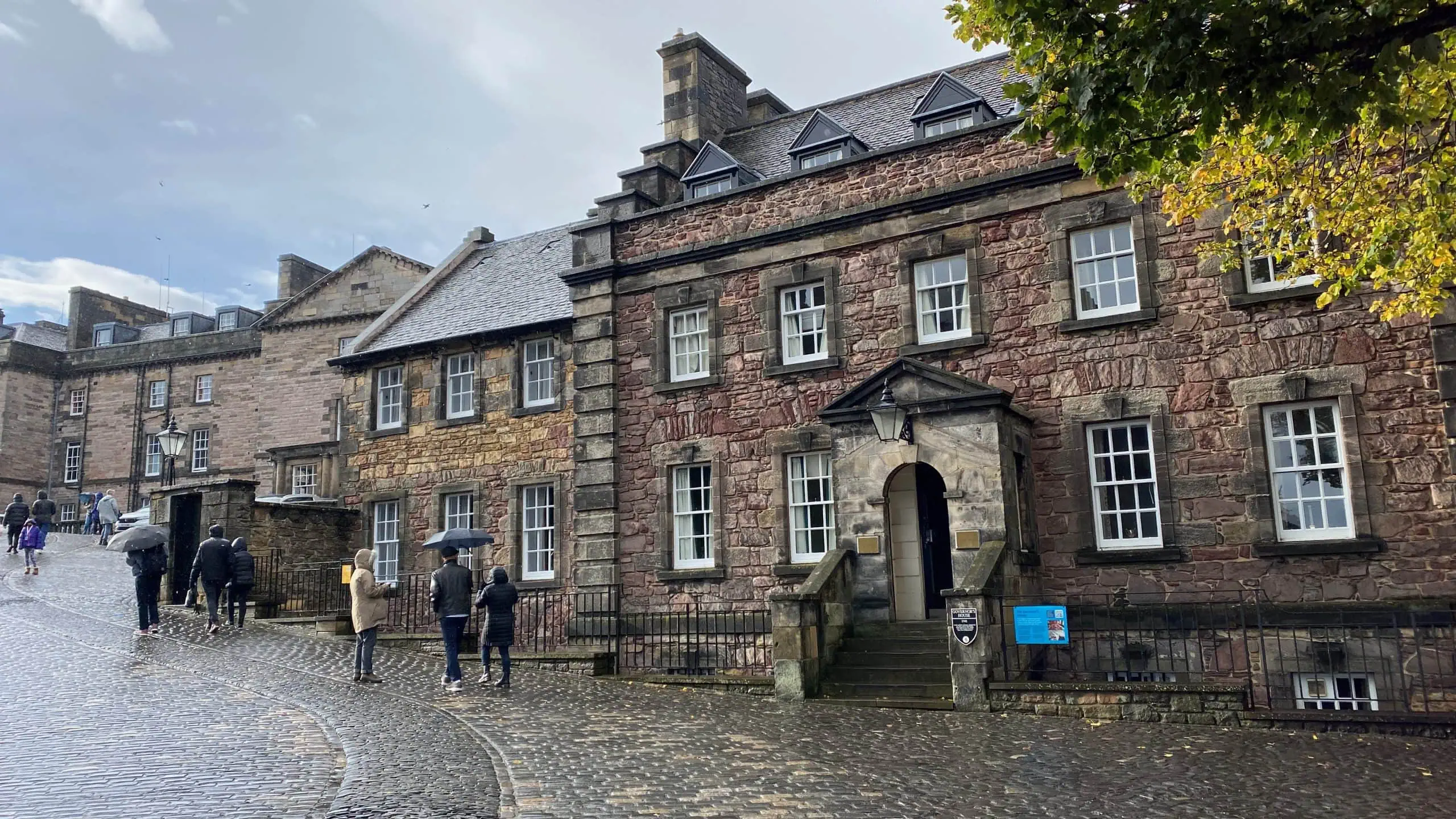
Inside, you can explore the Royal Palace, where Scottish kings and queens once lived, and walk through the Western Defences, which show how the castle was fortified against attack.
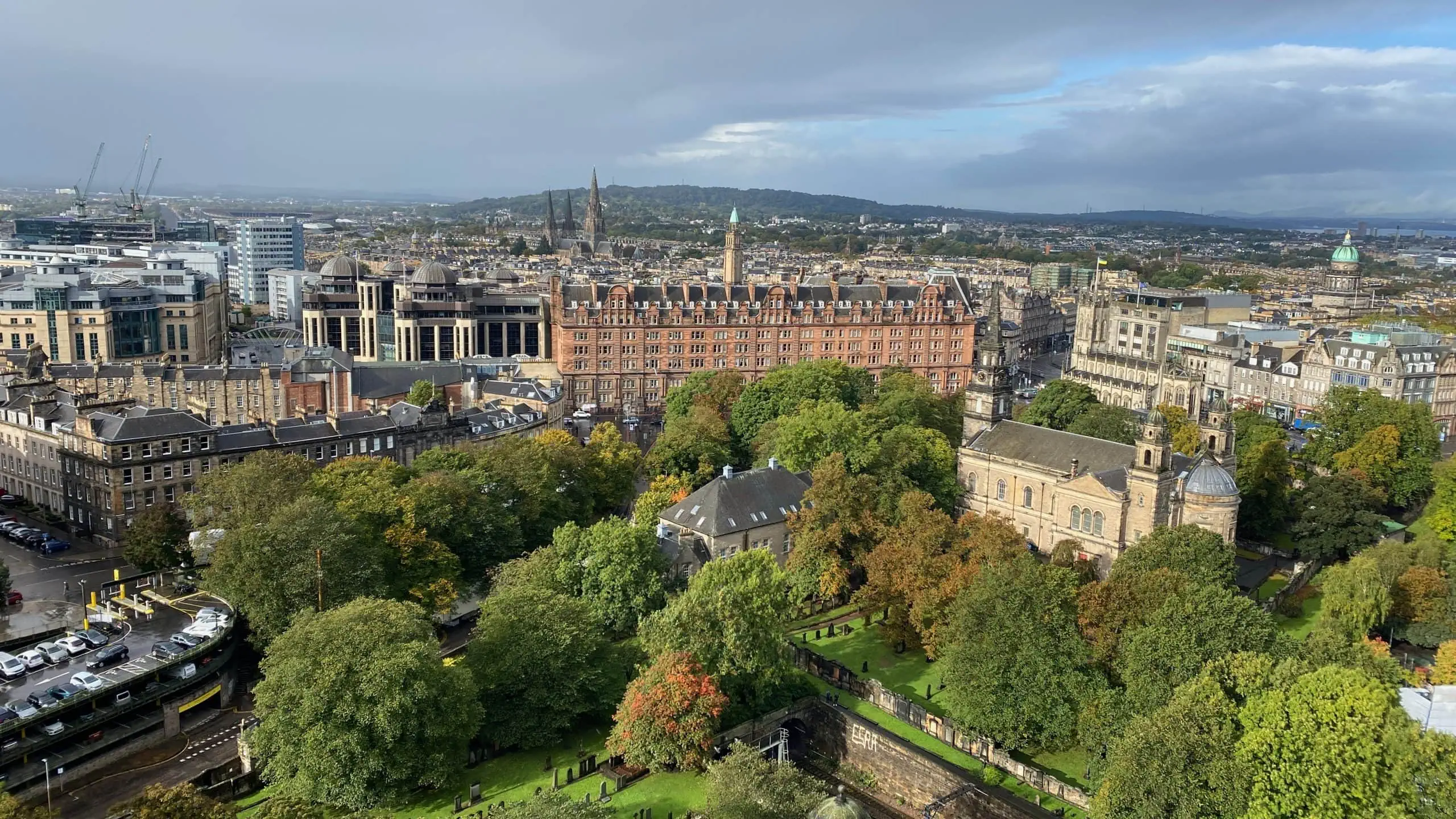
The vaults under Crown Square reveal where prisoners of war were once kept. The rooms have been recreated to depict their arduous underground living.
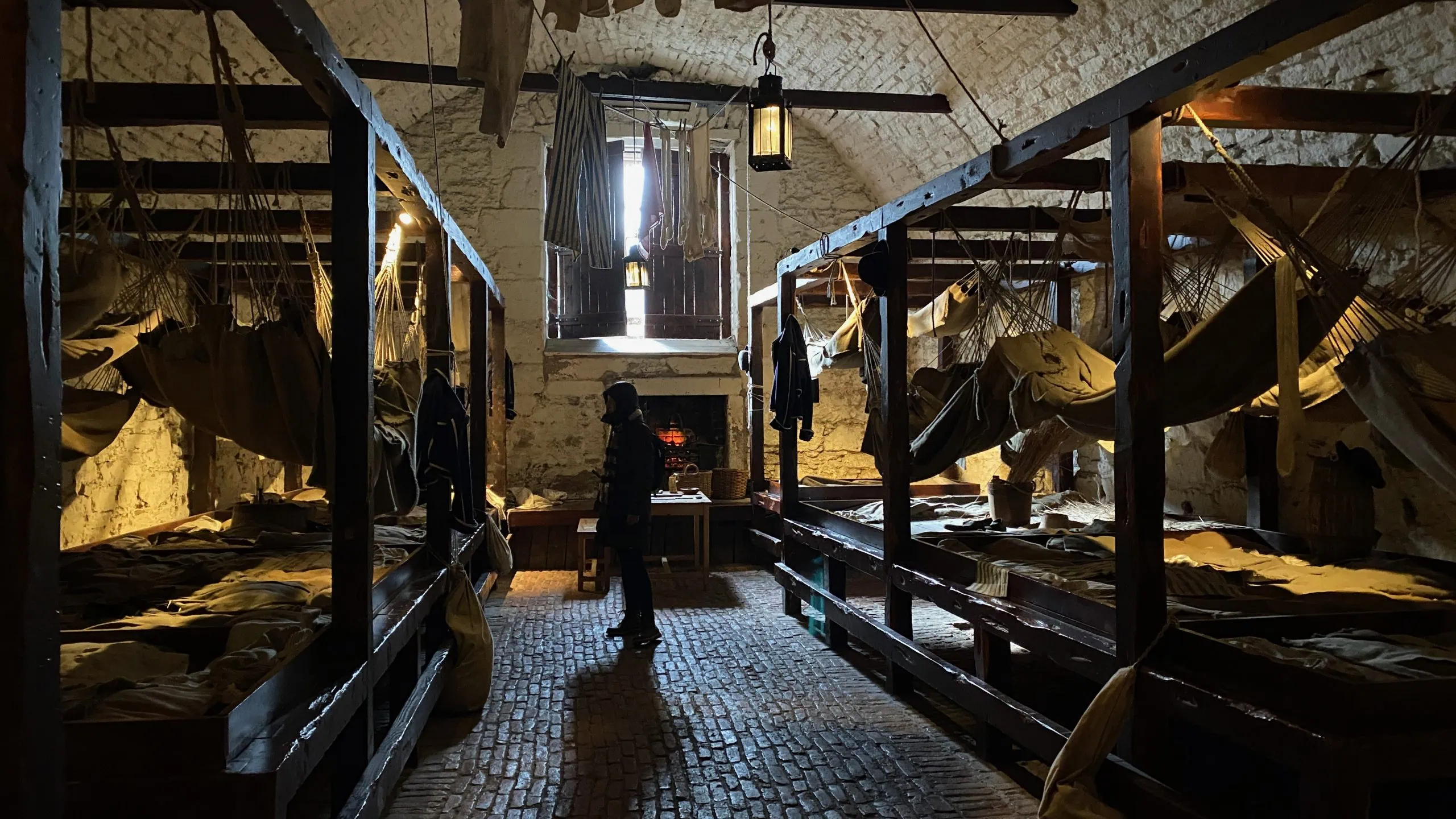
And one of the biggest draws is the Honours of Scotland display, including the crown jewels of Scotland. You will likely need to queue to see this one, but the line goes quickly. At the time of our visit, we saw the Stone of Destiny before it was taken to London for King Charles’ coronation, but it has since been moved to the Perth Museum.
The large open area leading to the Castle, called the Esplanade, is where the Royal Edinburgh Military Tattoo is held each summer. When we were there, the bleachers were still being dismantled several months later.
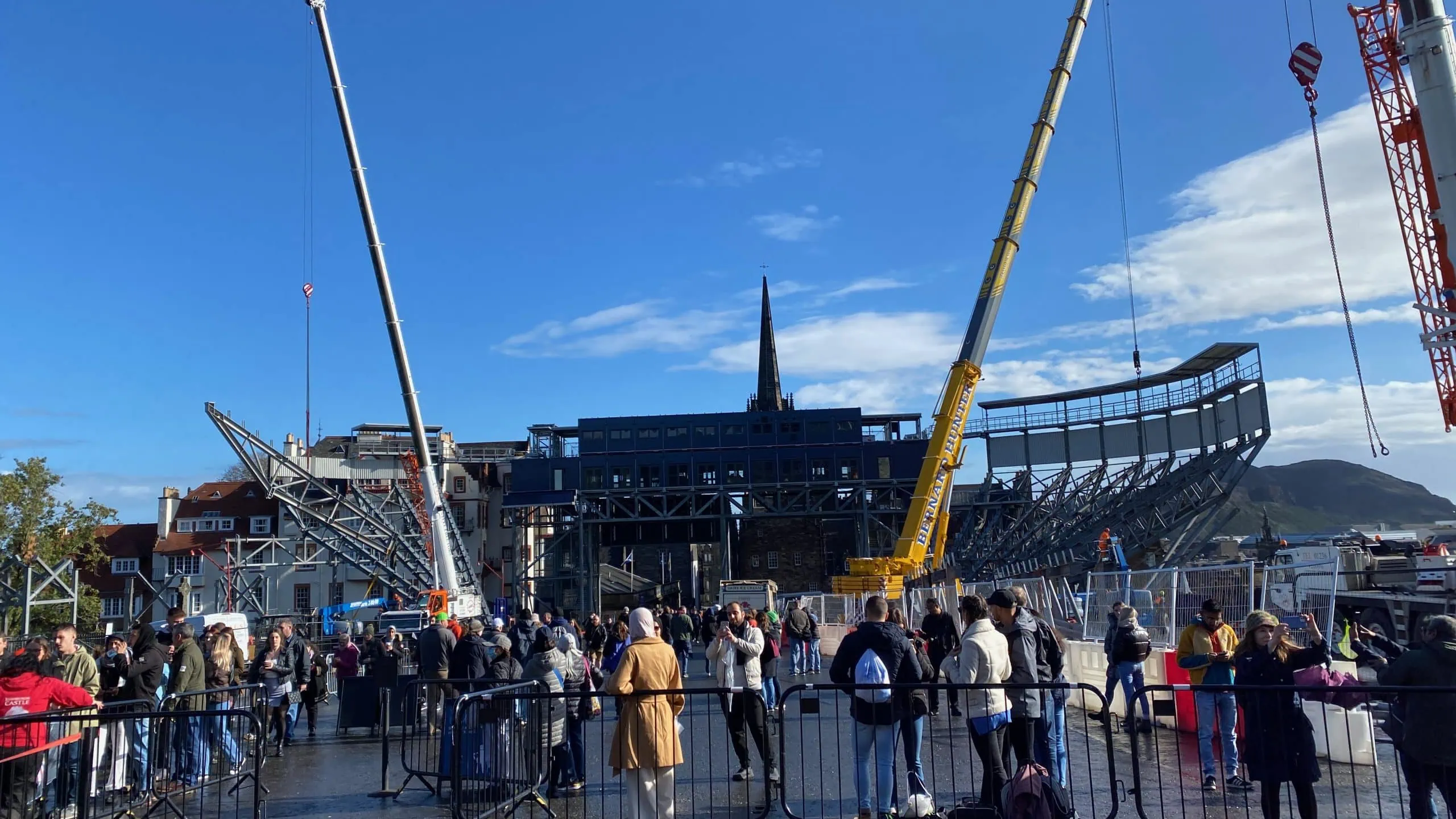
For anyone interested in military or Scottish history, Edinburgh Castle offers an interesting look at how the country has been shaped over centuries of battles, ceremonies, and royal events.
✅ A perfect way to explore the Castle grounds is with a local guide. Learn about the buildings and some interesting background details on this five-star walking tour.
Palace of Holyroodhouse
Located at the end of the Royal Mile, this stately property is the official home of the King when he visits Scotland. The grounds first held an Abbey that dates to the 1100s, and then in the 1500s, a Palace was built as the royal residence where Mary Queen of Scots lived.
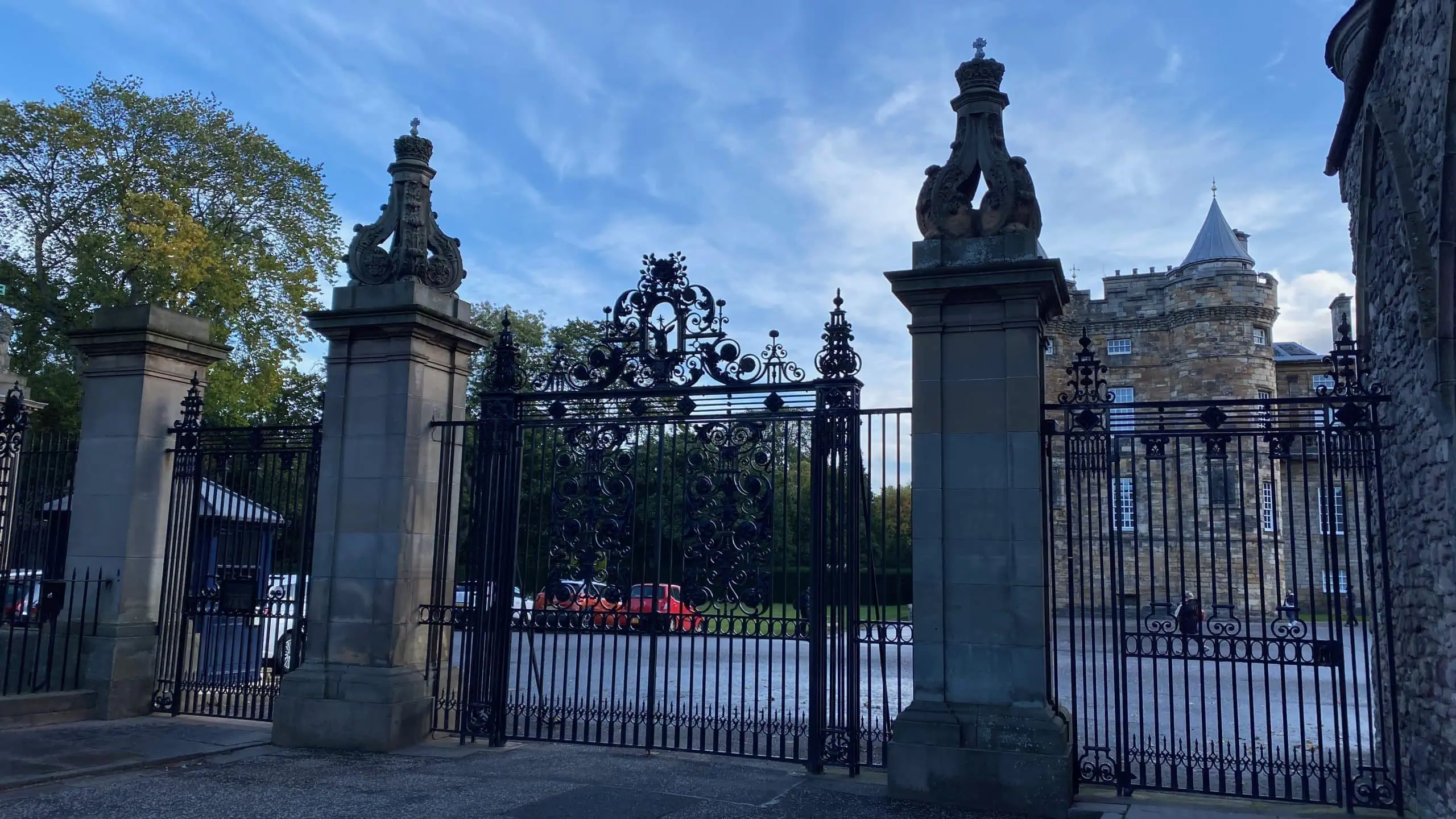
During the Cromwell years, the Palace fell into ruin but was significantly rebuilt in the late 1600s and from that time onward has been the residence of the British Monarch, providing a location where they hold important receptions and ceremonies.
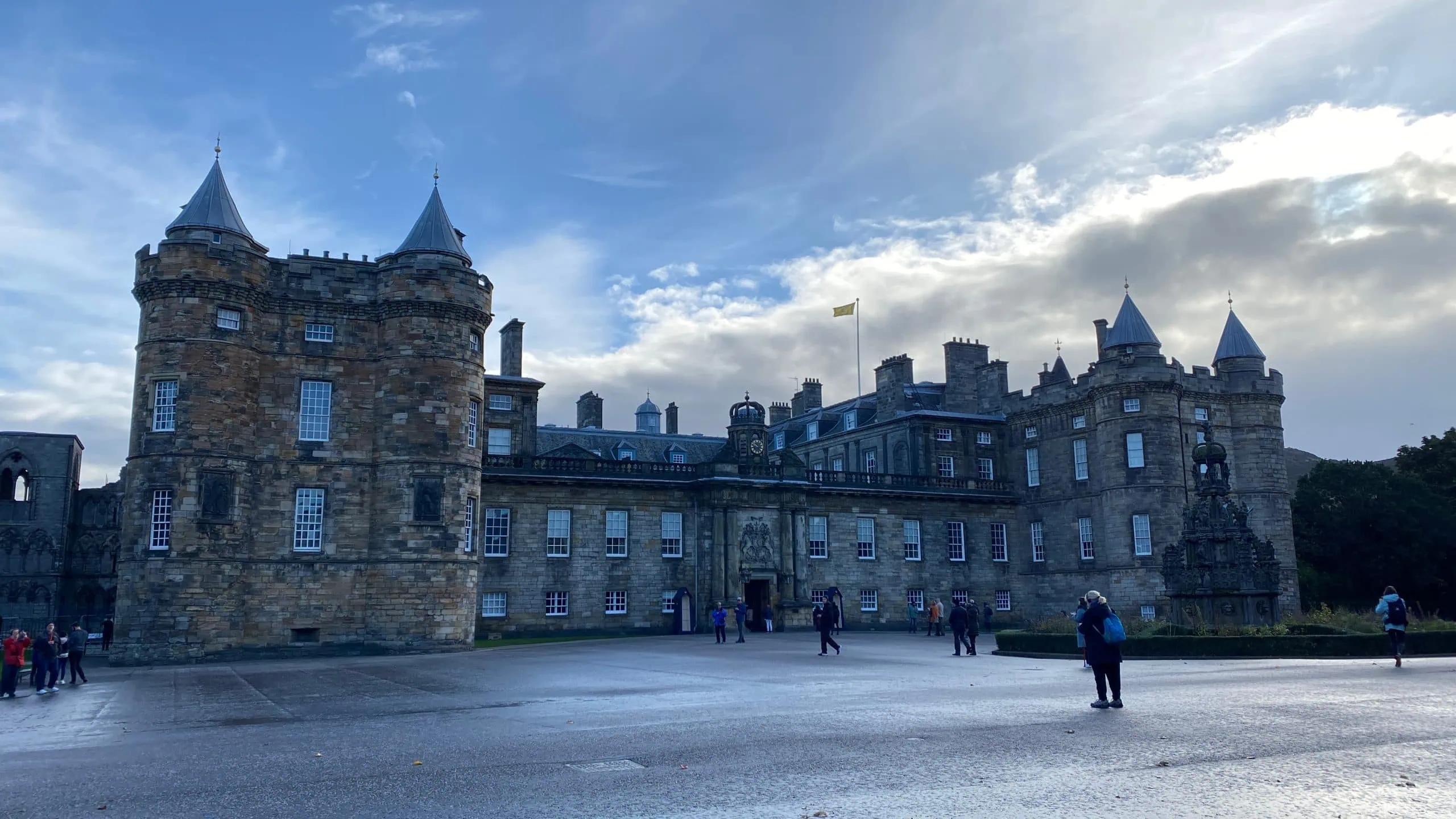
The Palace is also open to visitors, and you can see the State Apartments, the Abbey and the Palace Gardens.
Arthur’s Seat
Further on from the Palace, right at the edge of the city, is the Holyrood Park that spans 640 acres. The highest point in the park, at 250m above sea level, is Arthur’s Seat, the remains of a volcano dating back 350 million years.

It is a formidable sight from the city, and Robert Louis Stevenson even described it in his writing as “a hill for magnitude, a mountain in virtue of its bold design”.

The craggy hillside does have a 4 km looped walking trail that provides incredible views of the city from the top. It is a great spot to visit if you want to experience something in nature while still being in the heart of town.

Some of the path is very rocky and can be slippery, so be prepared with good walking shoes.
✅ Take advantage of a professional guiding you to the top on this 5-star rated, small group trek of Arthur’s Seat. Perfect for those who would like the security of an expert on this walk.
The Royal Mile
The Royal Mile is the main boulevard of Edinburgh’s Old Town and one of the city’s most fascinating places to explore. Stretching from Edinburgh Castle to the Palace of Holyroodhouse, it’s lined with historic buildings, traditional pubs, small museums, and shops selling everything from local crafts to whisky and tartan.
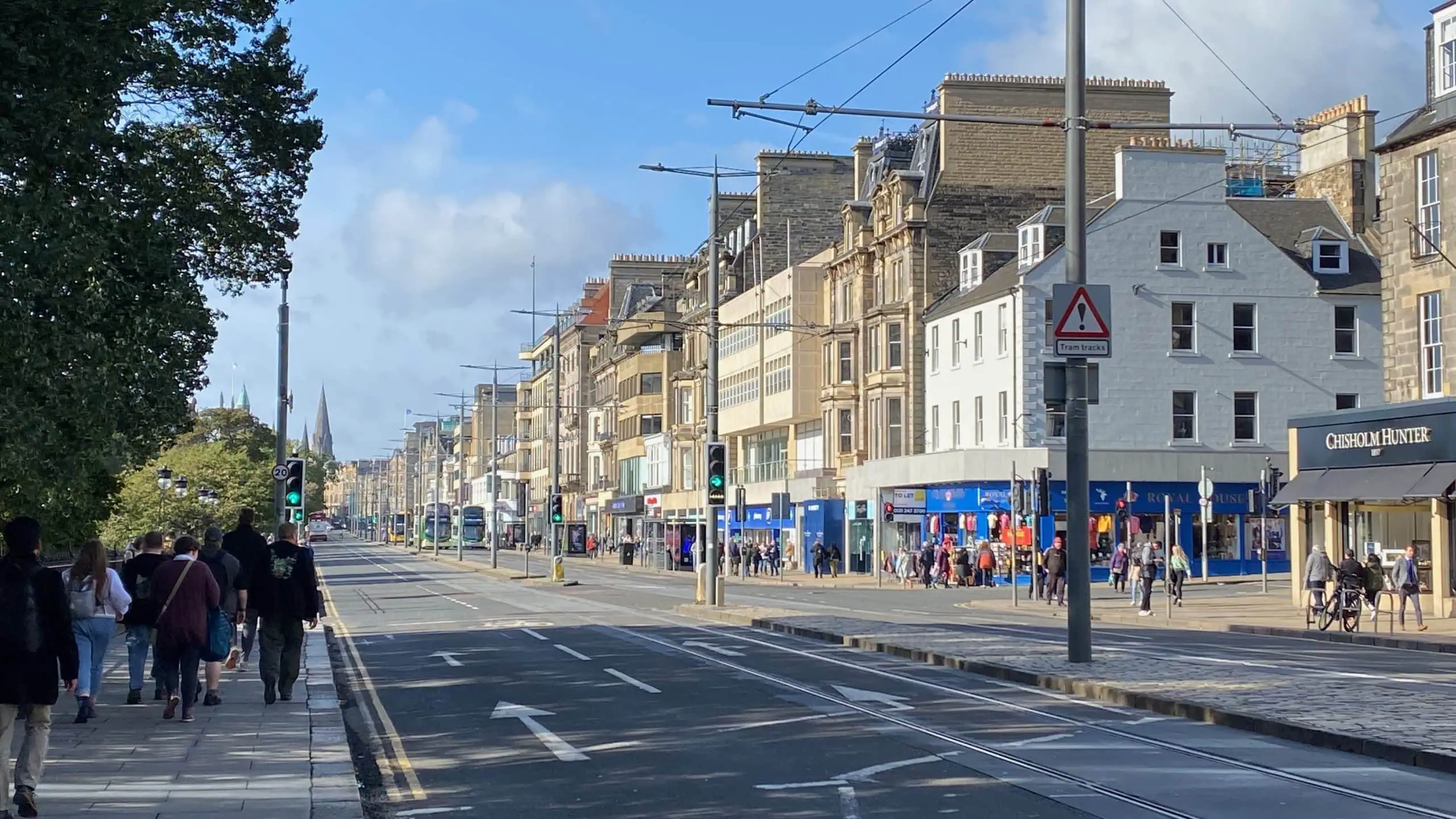
We found walking the Royal Mile gives you a real feel of Edinburgh’s vibe. The narrow lanes, known as closes, open up to hidden courtyards and are full of legends and folklore from the past. Along the way, you can browse local markets or check out the street performers and buskers that make this area so colourful.
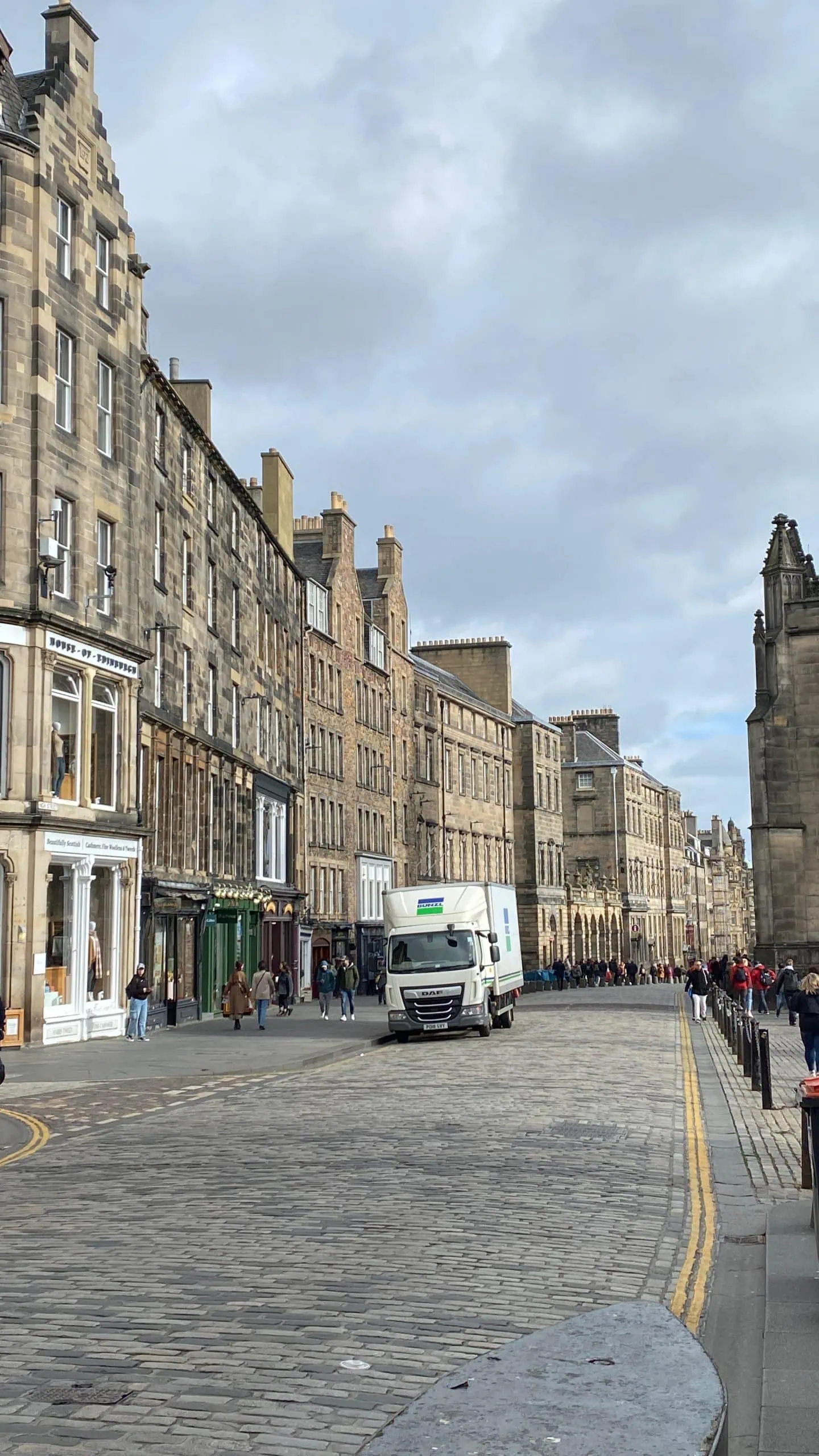
It’s a perfect place to spend a few hours indulging in some retail therapy, grabbing a bite to eat, and enjoying true Scottish hospitality.
✅ Make the most of your time in Edinburgh with this private walking tour that can be customized to your personal interests. It provides a perfect overview of most of the sights in this blog and is very highly rated as a positive experience.
Princes Street Gardens
This is a beautiful garden set right in the centre of the city. In fact, it is what divides the Old Town from the New Town. Originally, this location was Nor Loch and acted as a Medieval defence to Edinburgh Castle. And from many points in the garden, you have great views of the Castle looming overhead.
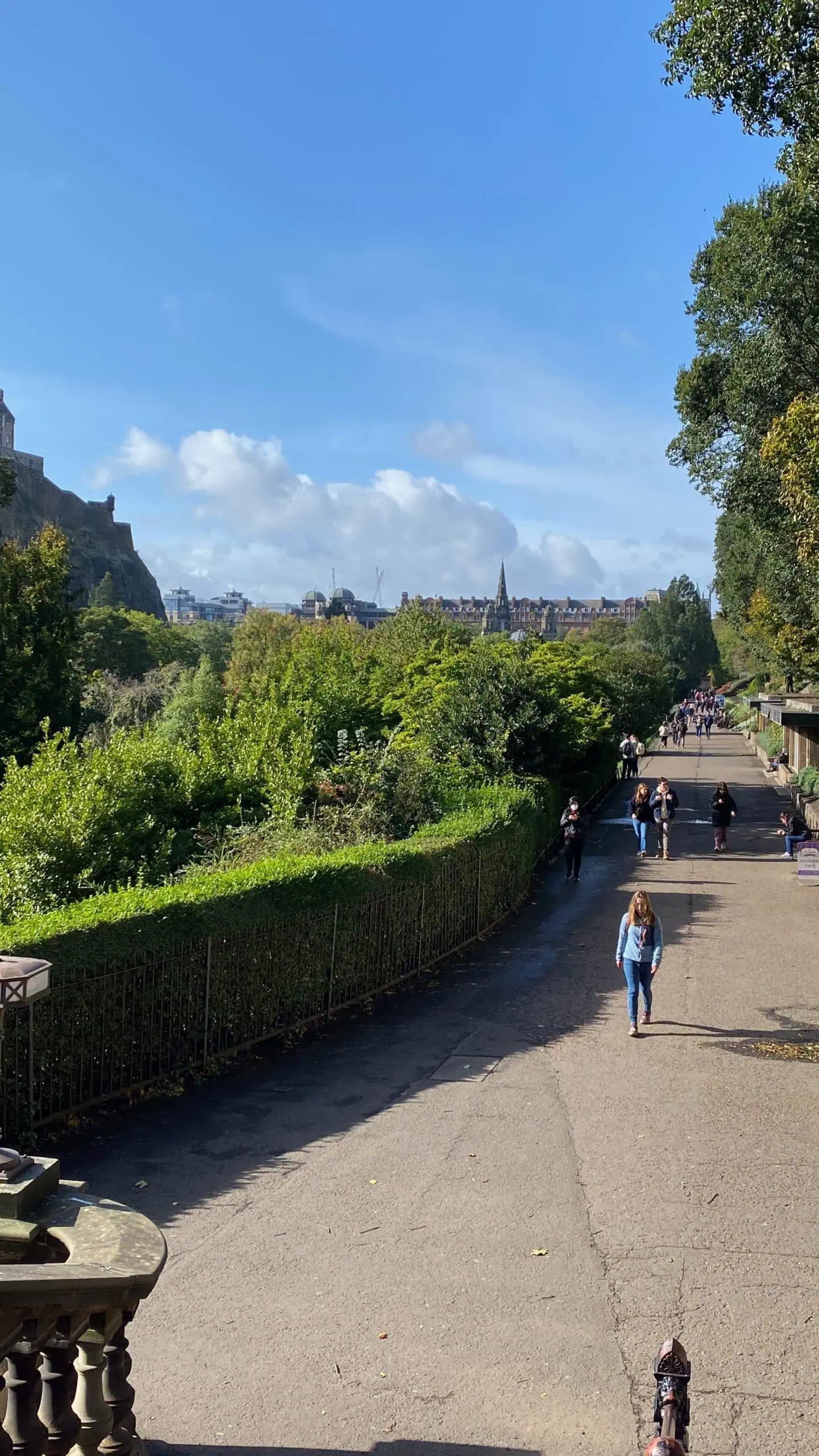
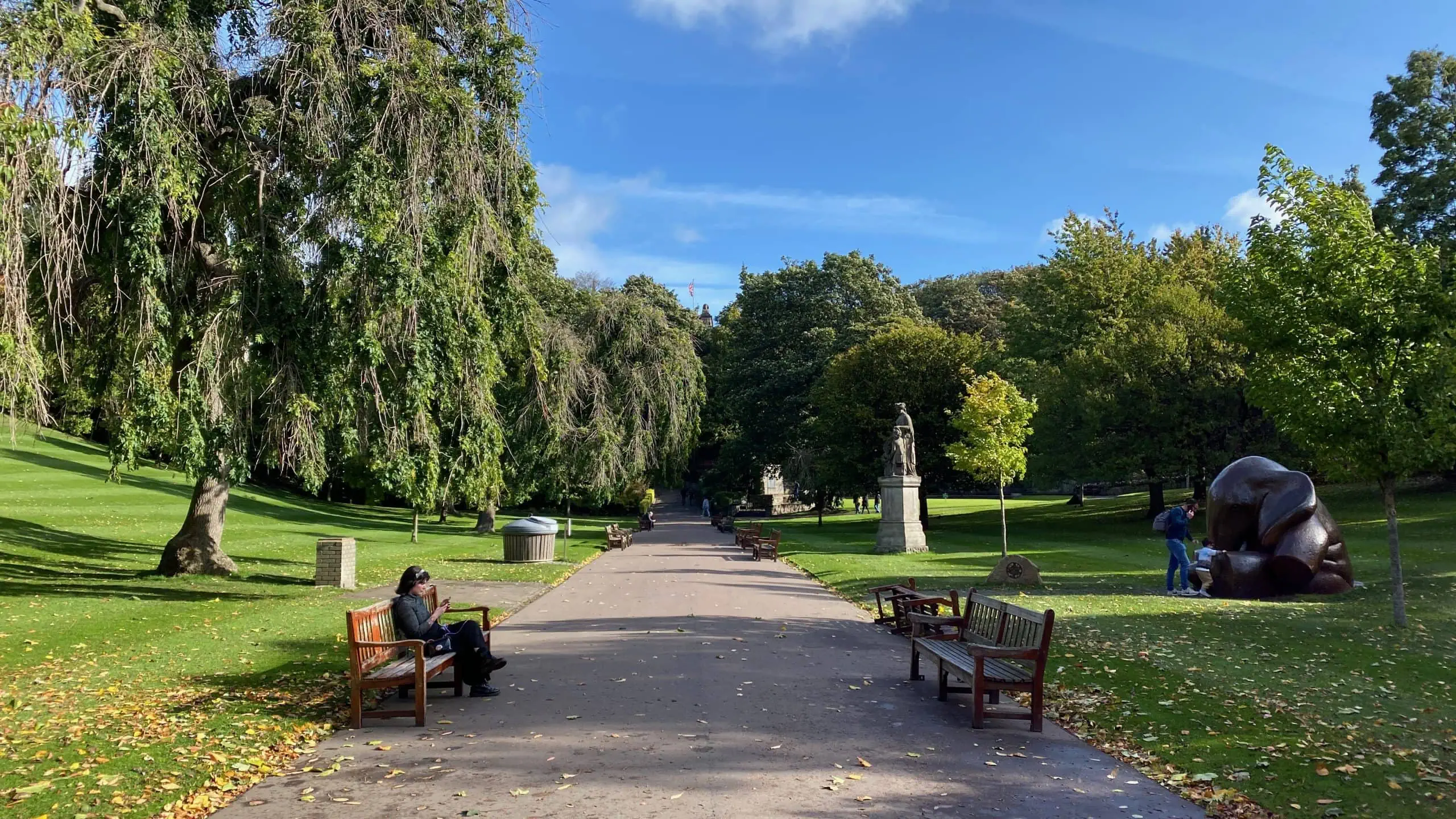
After the lake was drained, the gardens were planted and opened in 1820. It is a wonderful place for a walk, and many people use this park area for recreation. The green space has many mature trees, flower beds and interesting artwork interspersed throughout the grounds.
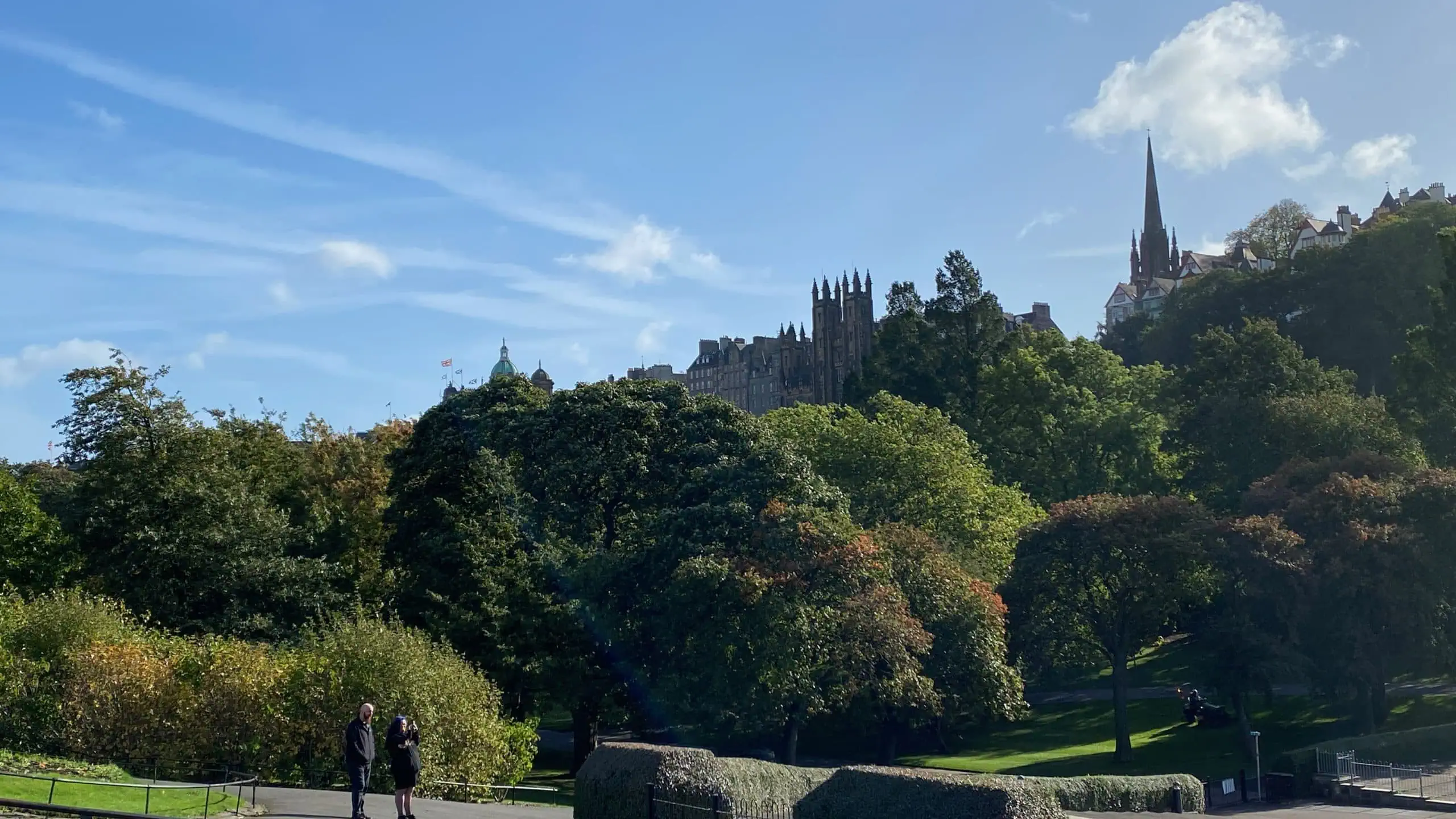
Make sure to check out the Ross Fountain. After being on display at the Great Exhibition in London in 1862, it was moved to its current location in 1872. The cast iron structure is painted turquoise, brown and gold, and it is very impressive to see.
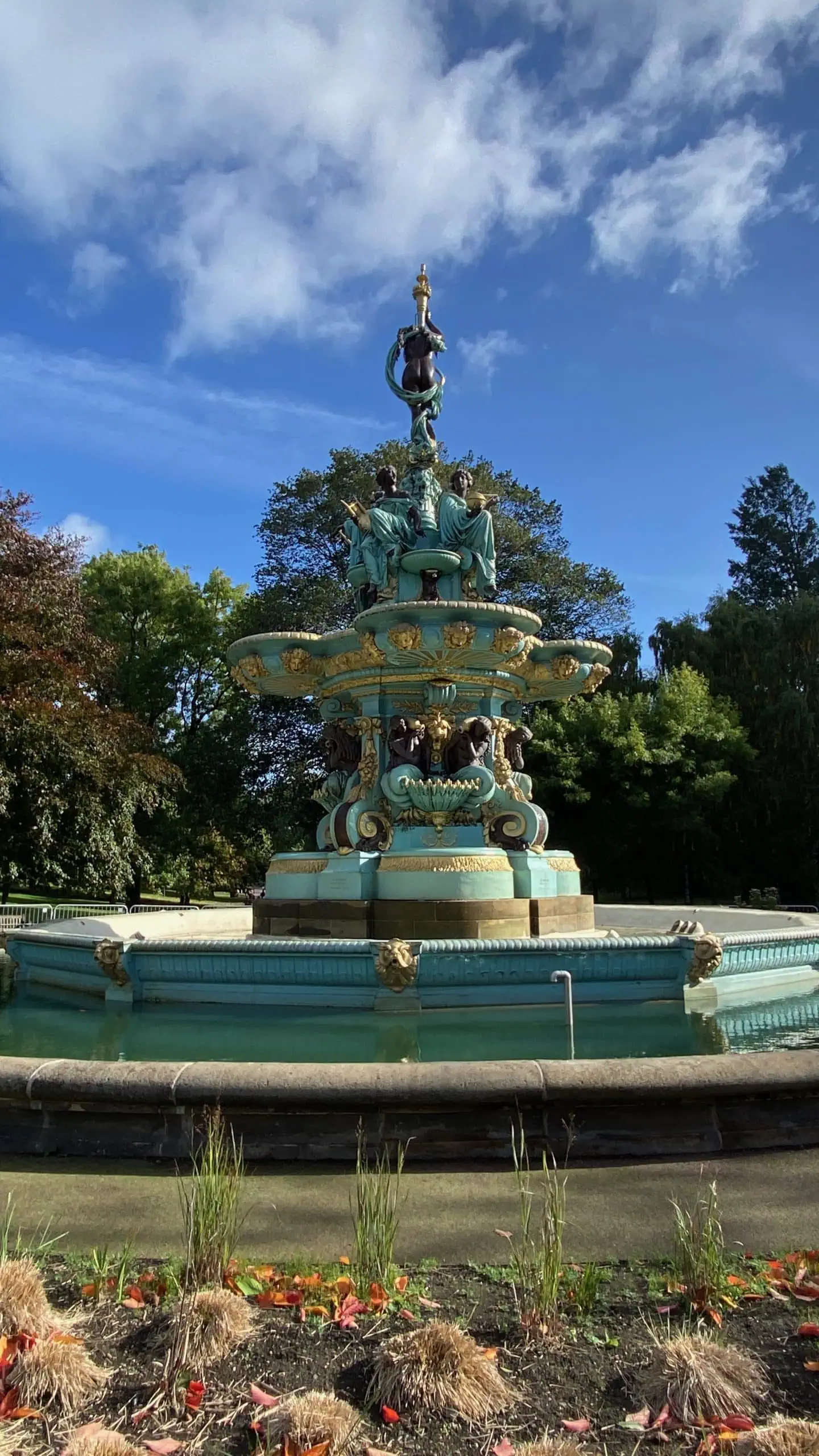
This location is host to the Edinburgh Festival in the summer and a Winter Festival around the Christmas season.
Scott Monument
Sitting at one entrance to the Princes Street Gardens is a very large monument, which is 61 metres high, and is in acknowledgement of the Scottish author Sir Walter Scott. It is a Victorian Gothic style and very elaborate, with 68 different statues made from sandstone, with the centrepiece a Carrara marble piece depicting Scott and his dog.
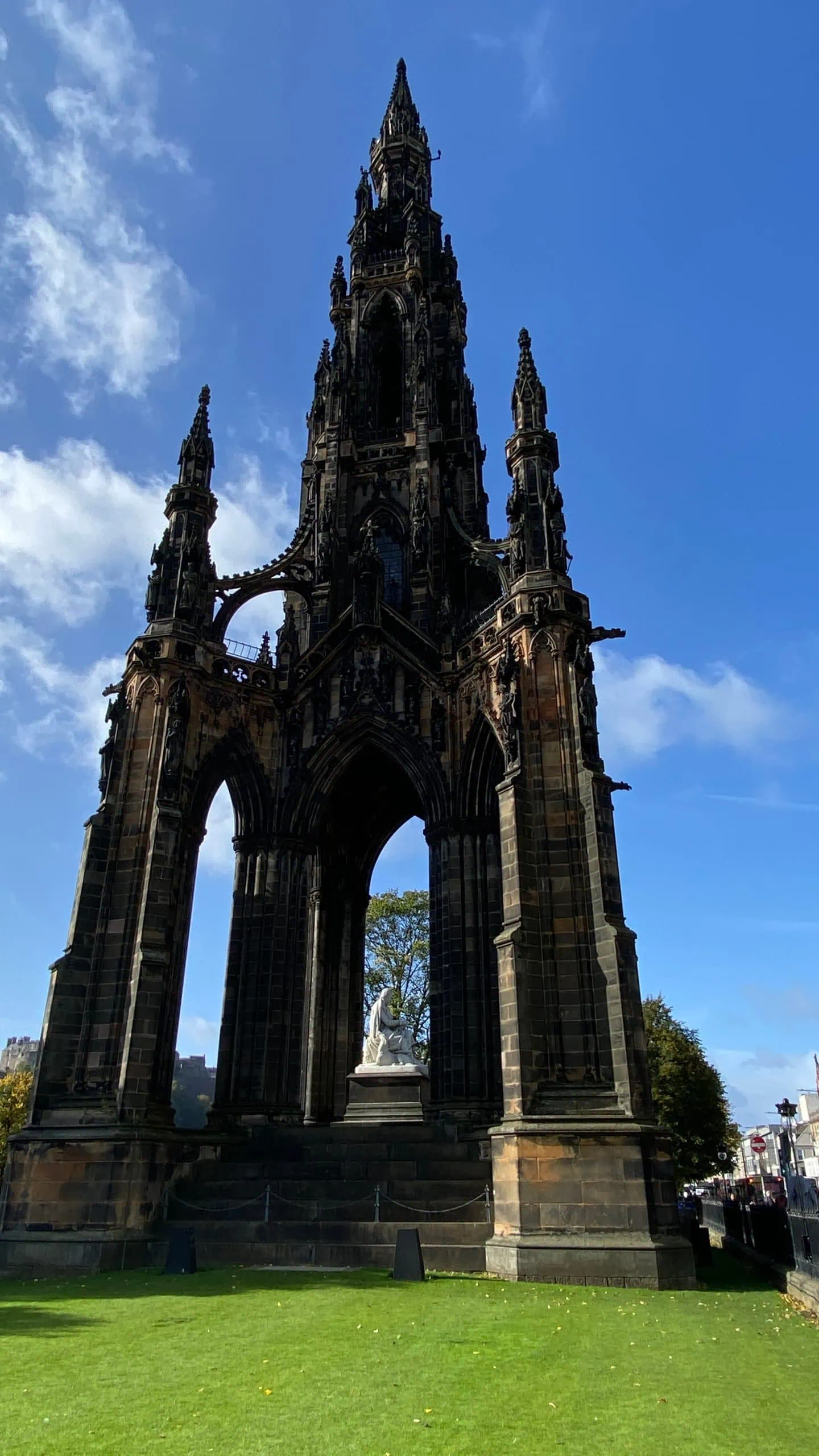
The top tiers host statues of many different people and characters, everything from lords to kings to poets and writers. Each one is associated with Scott’s novels in some way.
For an entrance fee, you can climb the 287 steps to the top, where a viewing platform provides a fantastic view over the city.
Fascinating Cemeteries
We found the cemeteries in Edinburgh to be enchanting. Many of them were very old, and the gravesites were intriguing to look at. We love wandering cemeteries like Recoleta in Buenos Aires and looking at the headstones, reading about the people who were laid to rest there. Below are three that we visited.
Greyfriars Kirkyard
This spot is located behind the Greyfriars Kirk, the first church to be built post-Reformation in 1620. The graveyard is very famous, and we found it to be a fabulous place to walk through. Many people use its path as a cut through to the other side of the city.
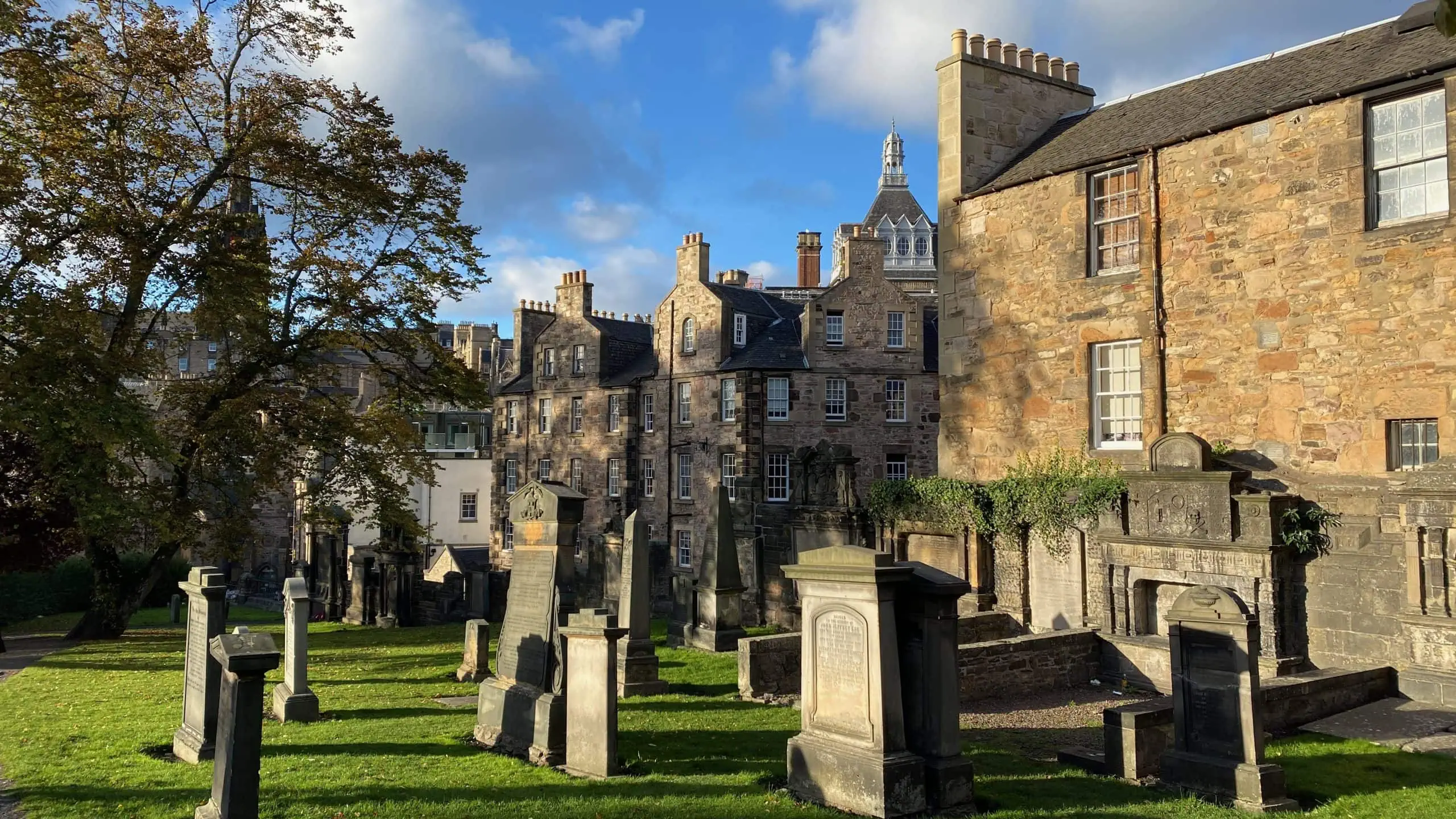
A famous headstone is dedicated to Greyfriars Bobby, a terrier who guarded his owner’s grave (a policeman) for 14 years after his death. In honour of his devotion, a headstone was erected where he was buried. It is now a popular spot for people to visit and hear the old tale of man’s best friend.

Old Calton Cemetery
These burial grounds started to be used in 1718. Located on Calton Hill in the north east of the city, it was actually split into two sections when Waterloo Place was built in 1819. Many important Scots are buried here, including philosophers, scientists and clergymen.
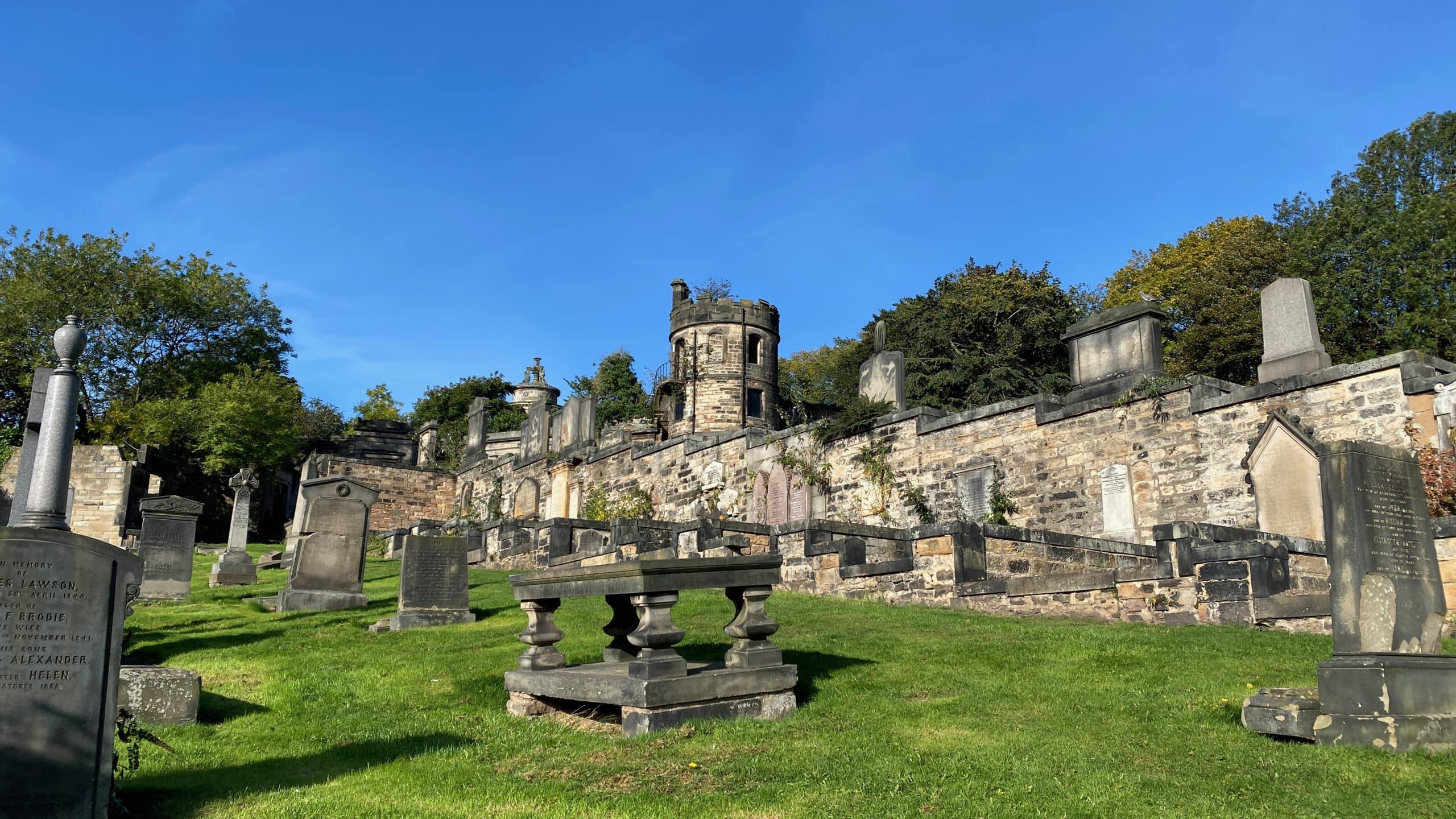
There are several monuments, such as the Political Martyrs’ Monument and the American Civil War Memorial. The entire burial ground and monuments have been designated as a protected area.
New Calton Cemetery – Burns Monument
This cemetery was built as an overflow and relocation site from the Old Calton Cemetery. It took three years for the officials to identify and move the bodies, along with their headstones, to the new area. This means that some of the stones are actually older than the cemetery plot.
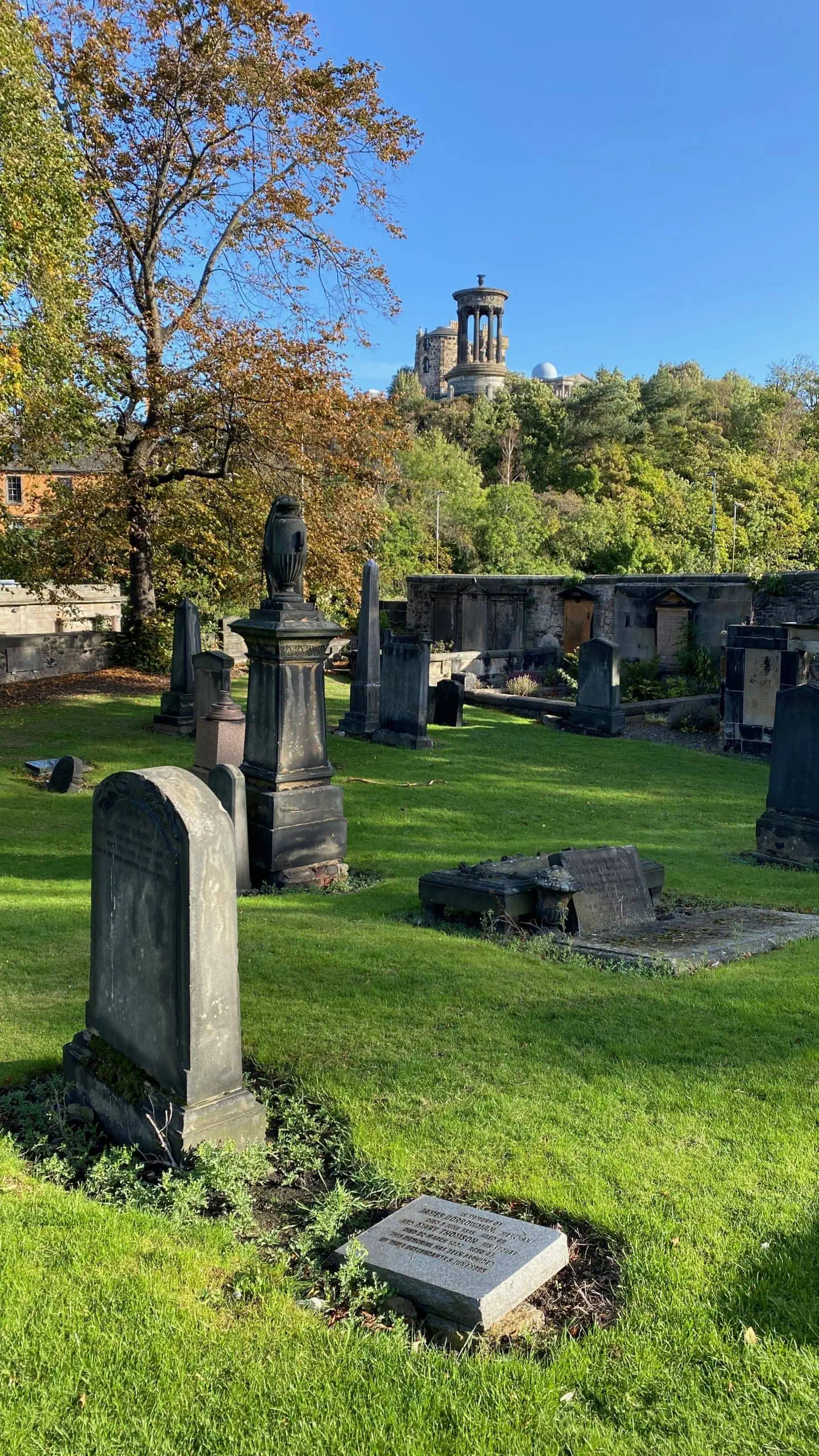
We enjoyed walking around this spot and seeing the impressive stones and memorials. In this part, the Stevenson family plot can be viewed. These are family members of the famous Robert Louis Stevenson, the author.
✅ If you really want to learn the stories and folklore around the cemeteries of Edinburgh, check out this fabulous 1 1/2 hour tour that covers the haunted vaults and graveyards of the city.
St Giles Church
Halfway along the Royal Mile, St Giles’ Cathedral has been a cornerstone of Edinburgh’s history for nine hundred years. Built in the 12th century by King David I, it has survived wars and reformations and has become one of Scotland’s most important landmarks. Its crown-shaped spire dominates the skyline and can be seen from many points in the city.
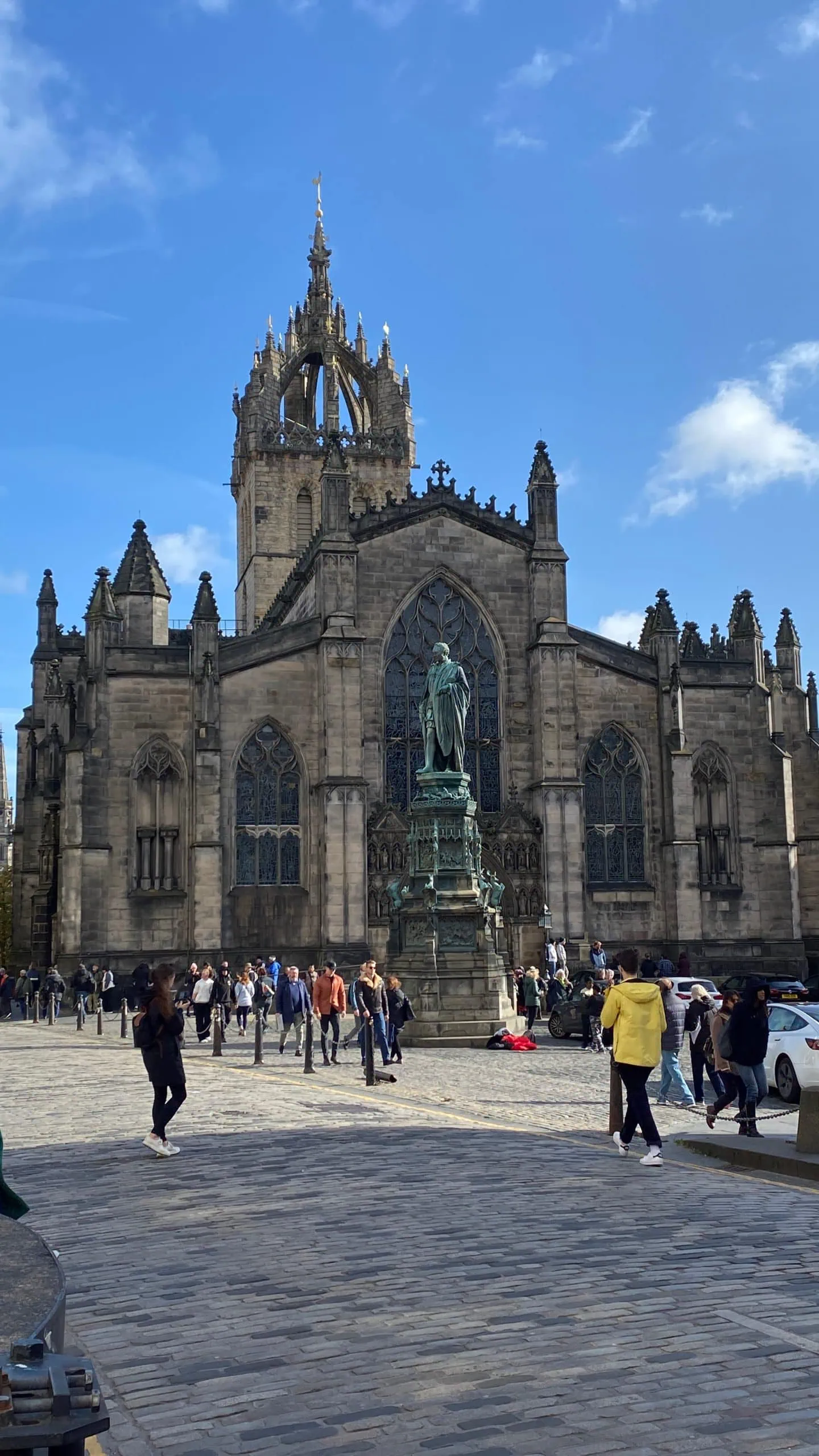
This is where John Knox preached and helped to formulate a new faith for the people. Over the centuries, St Giles has served as a parish church, a meeting place for Parliament, and a venue for royal ceremonies. Today, it is still an operating church with services.
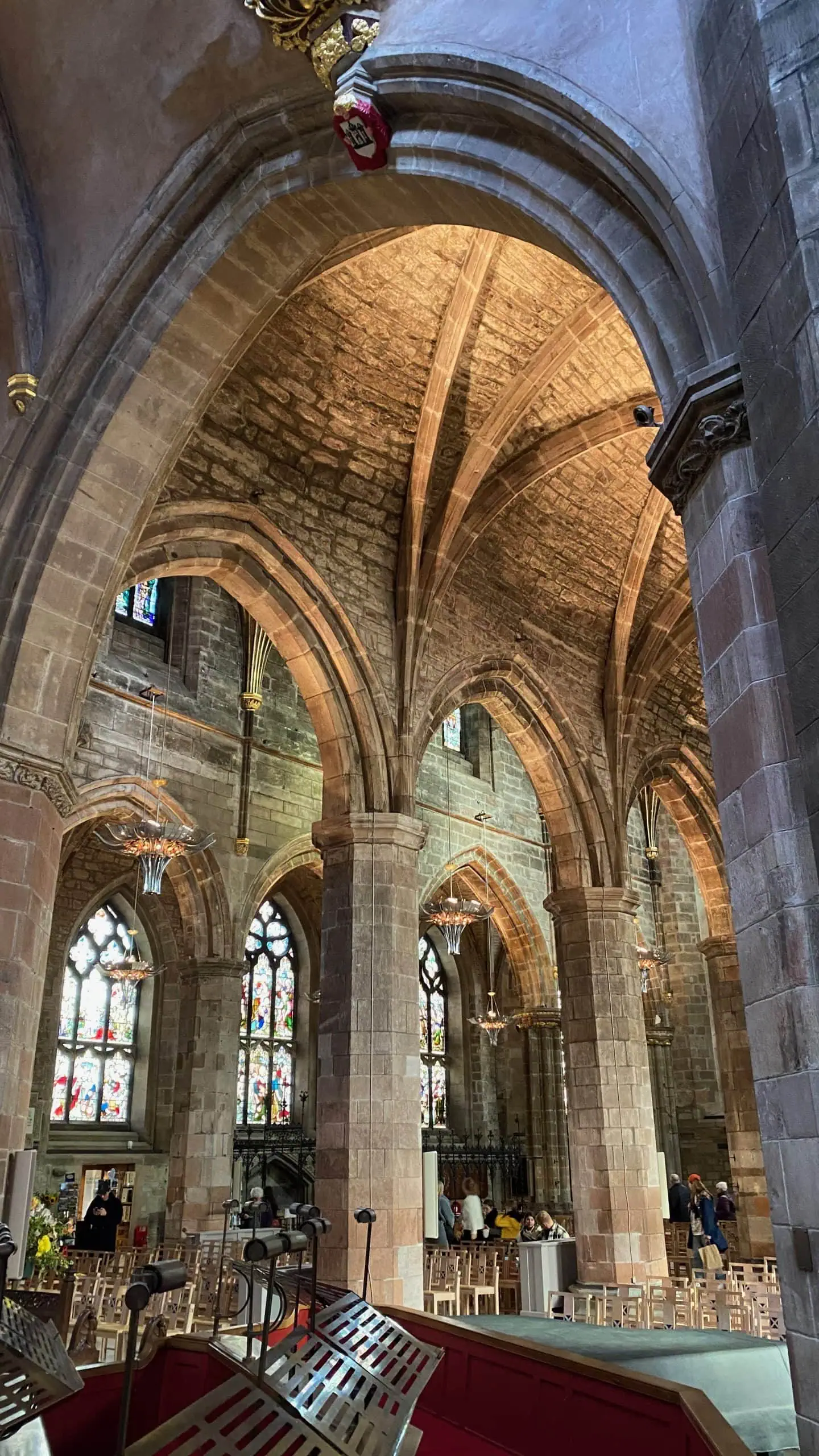
Inside, there are some interesting things to see. Near the choir, the Thistle Chapel was built in 1911 for Scotland’s Order of the Thistle. Its detailed wood carvings, vaulted ceilings, and family crests make it one of the best examples of early 20th-century craftsmanship in the city.
Also notable is the modern stained-glass Burns Window celebrating poet Robert Burns through creative, symbolic scenes inspired by his work. It’s a very contemporary installation that works well against the cathedral’s medieval stonework.
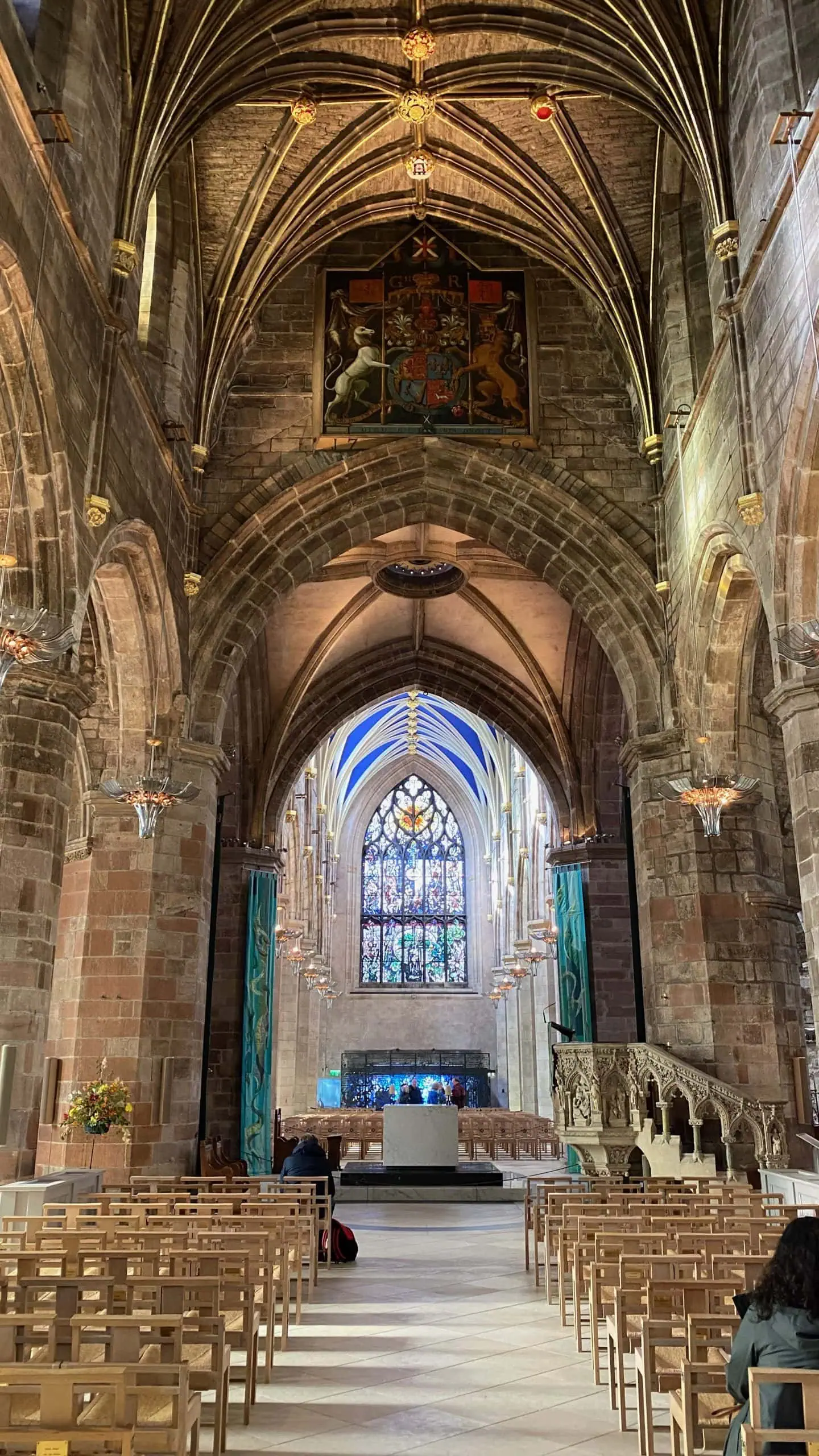
You can purchase an audio guide that provides a self-guided tour.
Tours at Holyrood Distillery
This little distillery has a unique approach to creating its whisky and gin products. They use traditional methods but try new and different recipes to create unique products. Using heritage malts and specialty yeast, they are experimenting and producing some exotic flavours.
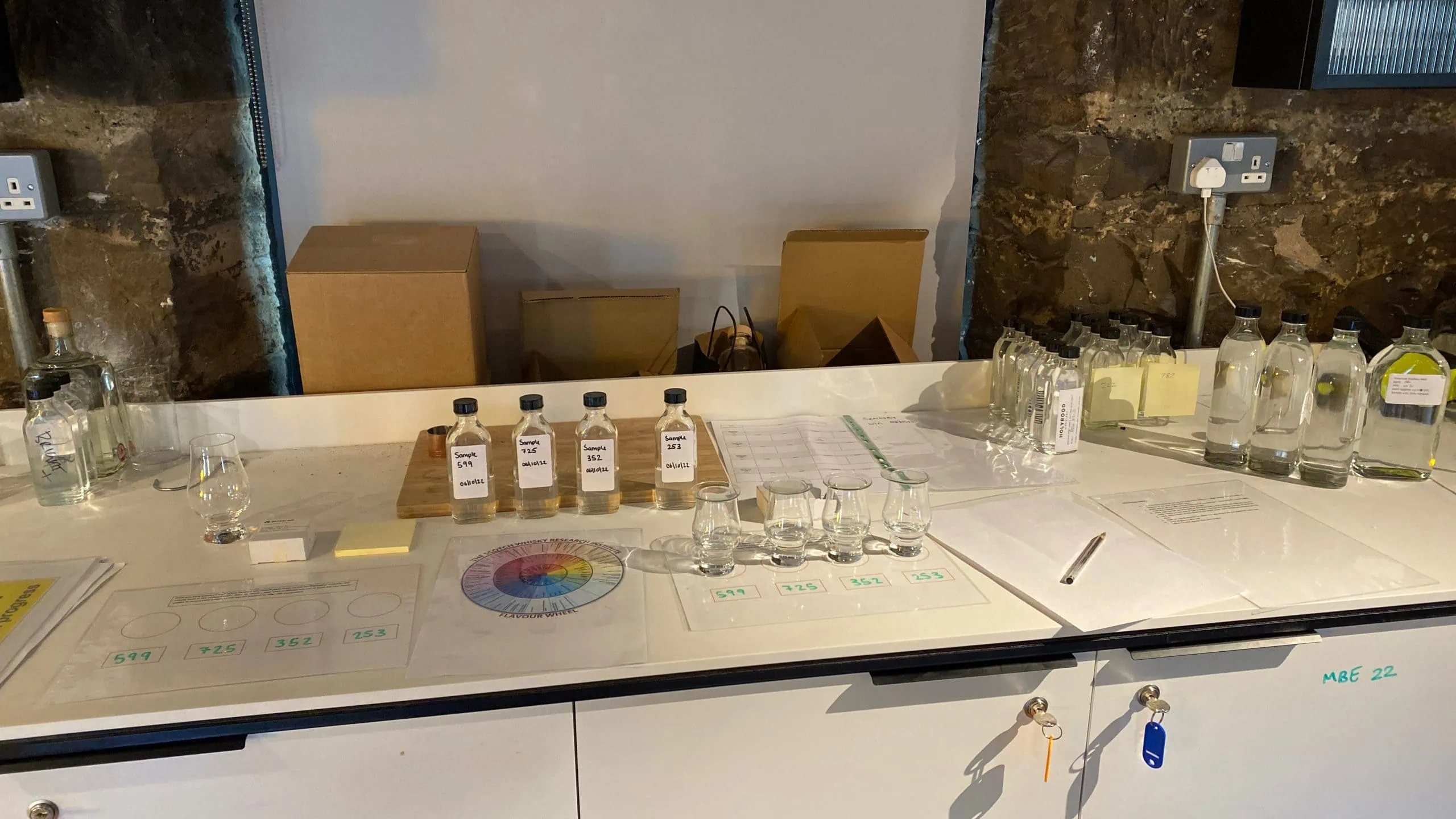
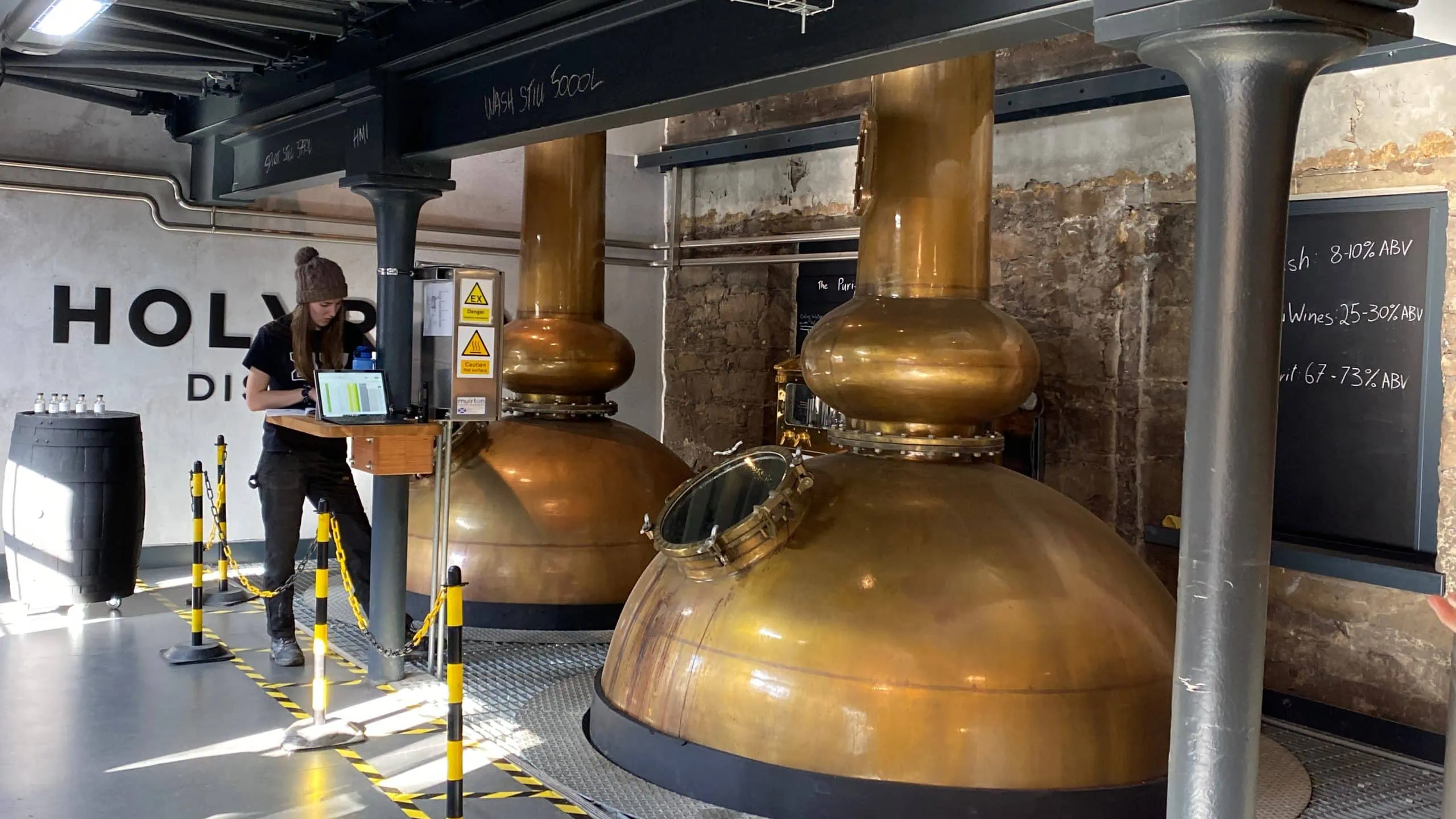
We went here for a great gin tour. After a detailed tour of their facilities and an explanation of their process, we finished with a taste test of four cocktails. Each drink we tried had a fresh, new twist, and we enjoyed them all. We love visiting small local distilleries like Dunnet Bay in northern Scotland. This is a great way to spend a couple of hours to learn about this age-old process and indulging in some taste testing.

Britannia Yacht
Visiting the Royal Family’s yacht was a wonderful experience. Being a royal follower, it was a treat to explore this amazing vessel that the Queen loved dearly.
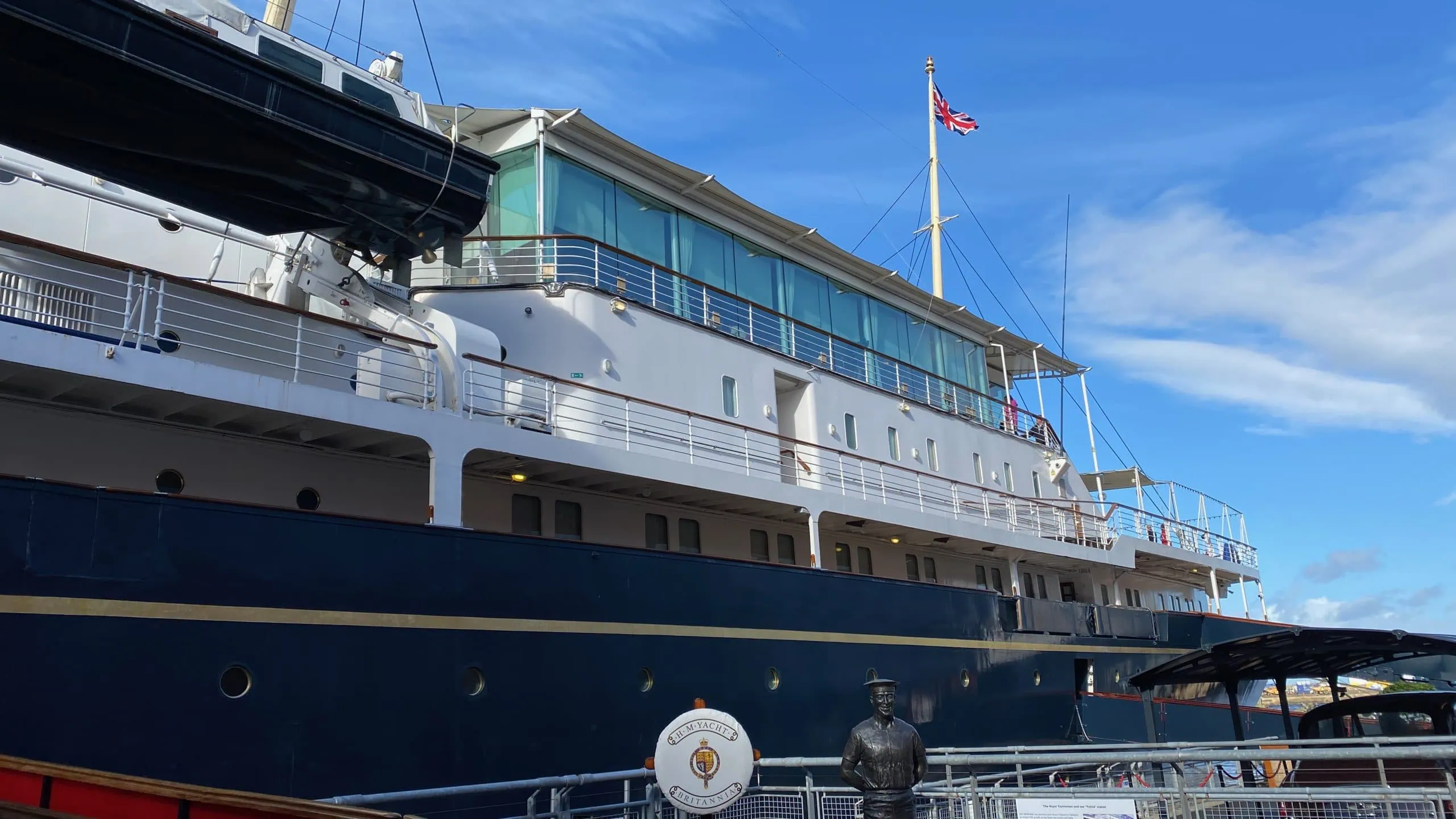
This ship was used extensively by the Royal Family for over 40 years, and it sailed over 1,000,000 nautical miles on 968 state visits. On board, the Royal Family hosted many diplomats, presidents and prime ministers of various countries.

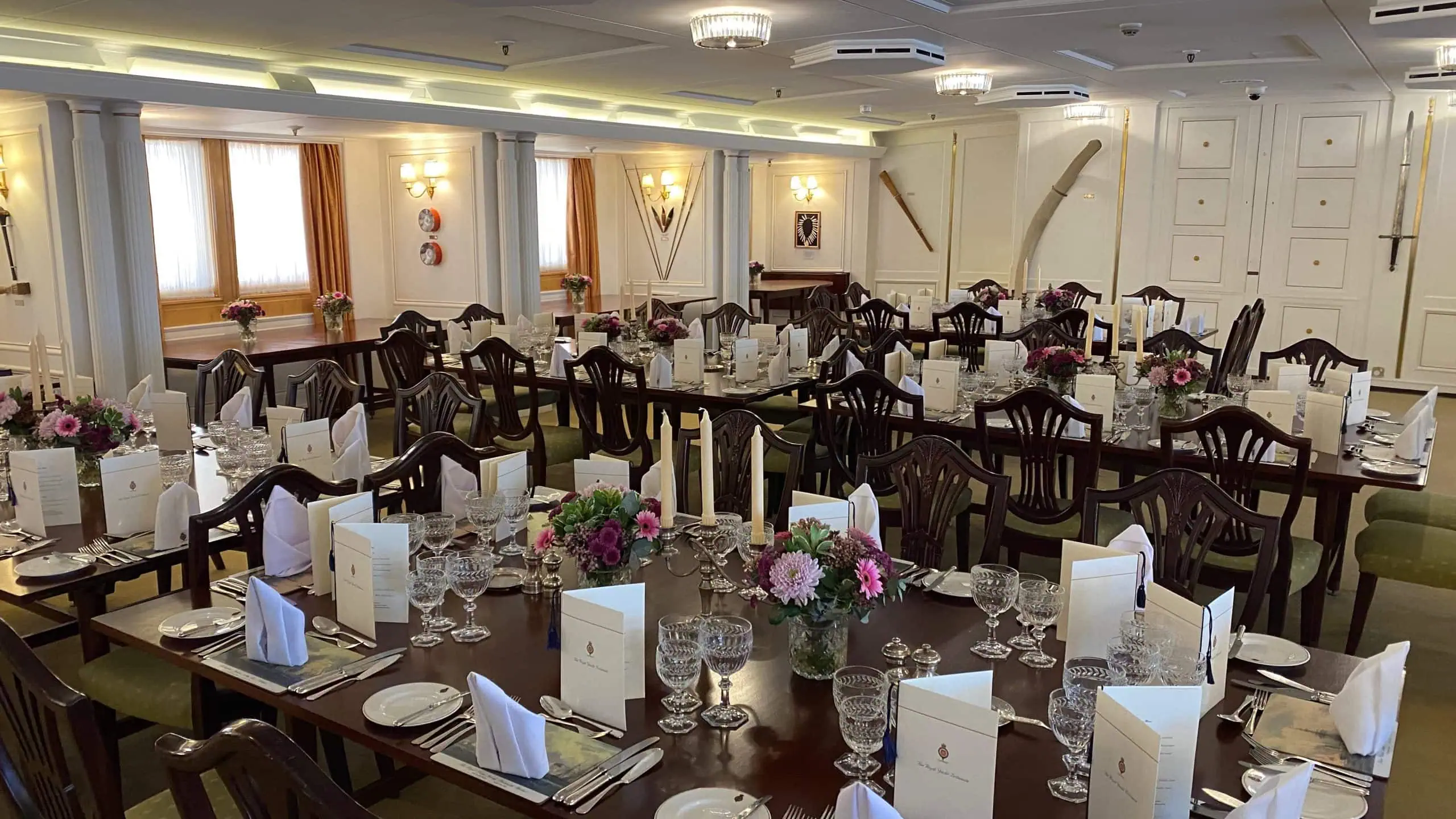
When you visit, you are given an audio guide and can tour the five decks of the ship. Many areas are open, including the Bridge, the State Apartments, the living and dining rooms and the crew’s quarters. We even toured the kitchen, engine rooms and infirmary areas.
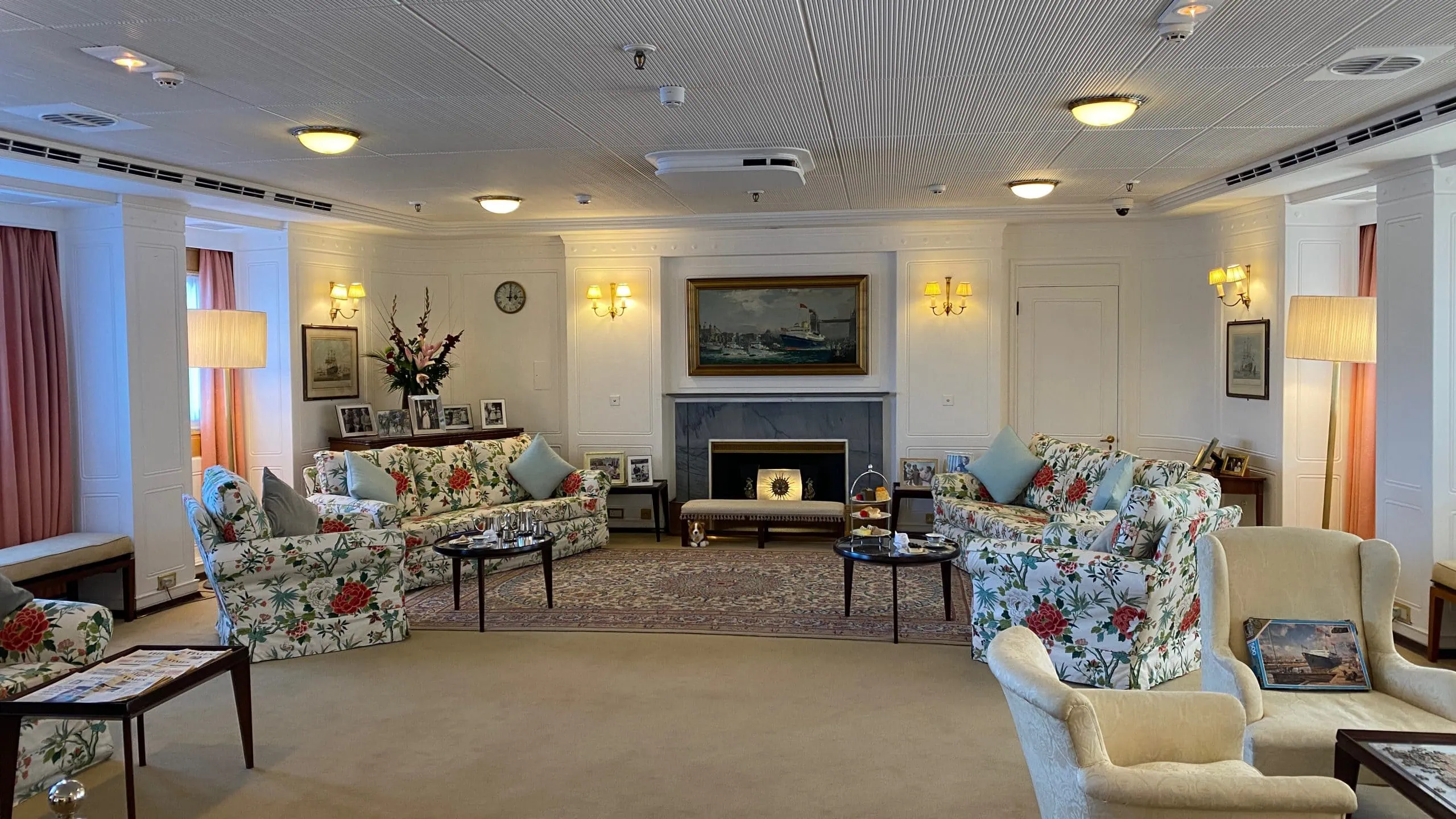
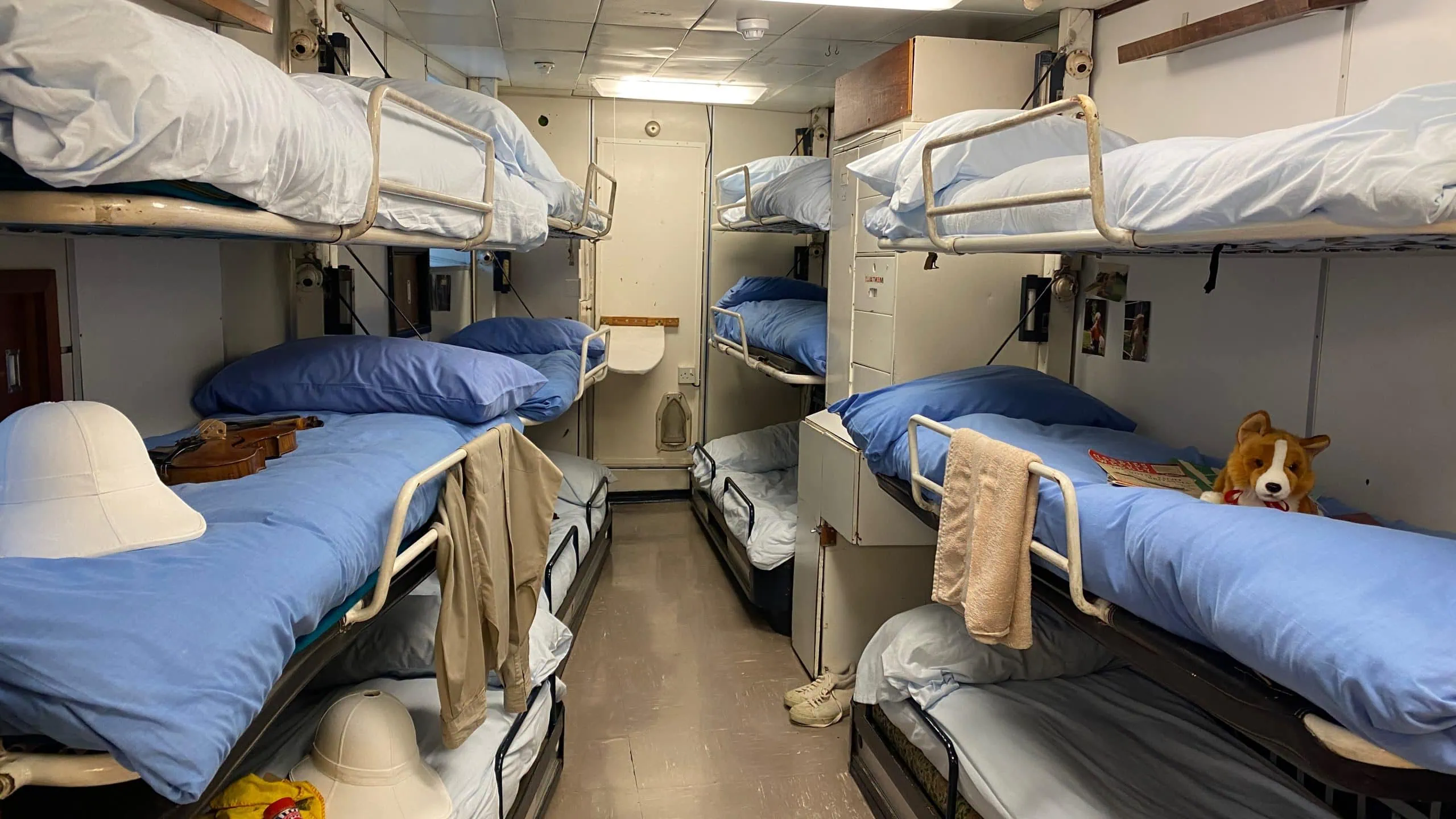
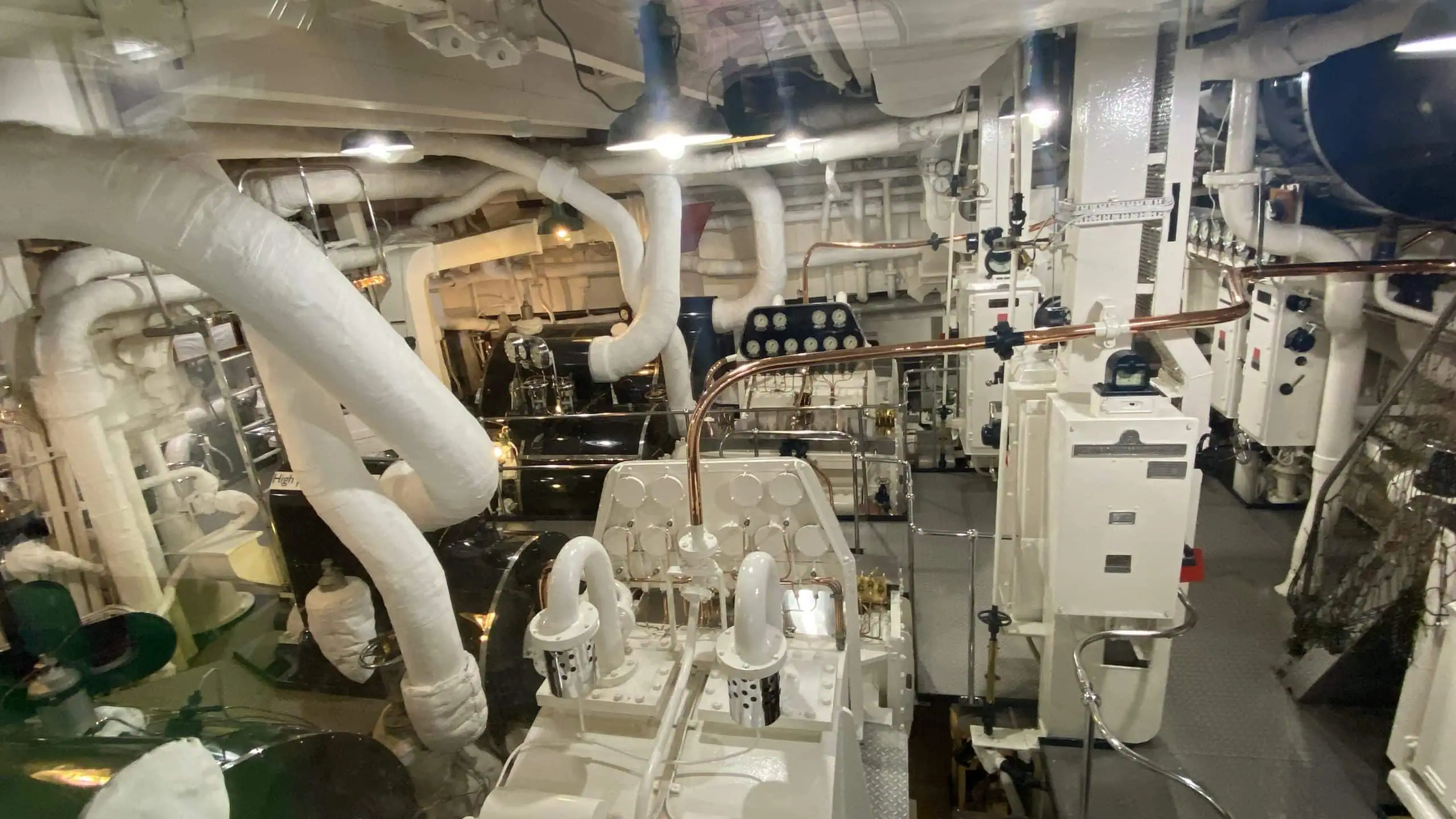
We were actually quite surprised at how understated the Queen’s private quarters were. The tour audio explains that when choosing the decor, she didn’t want the rooms to be too stuffy, so it looks rather like an average home.
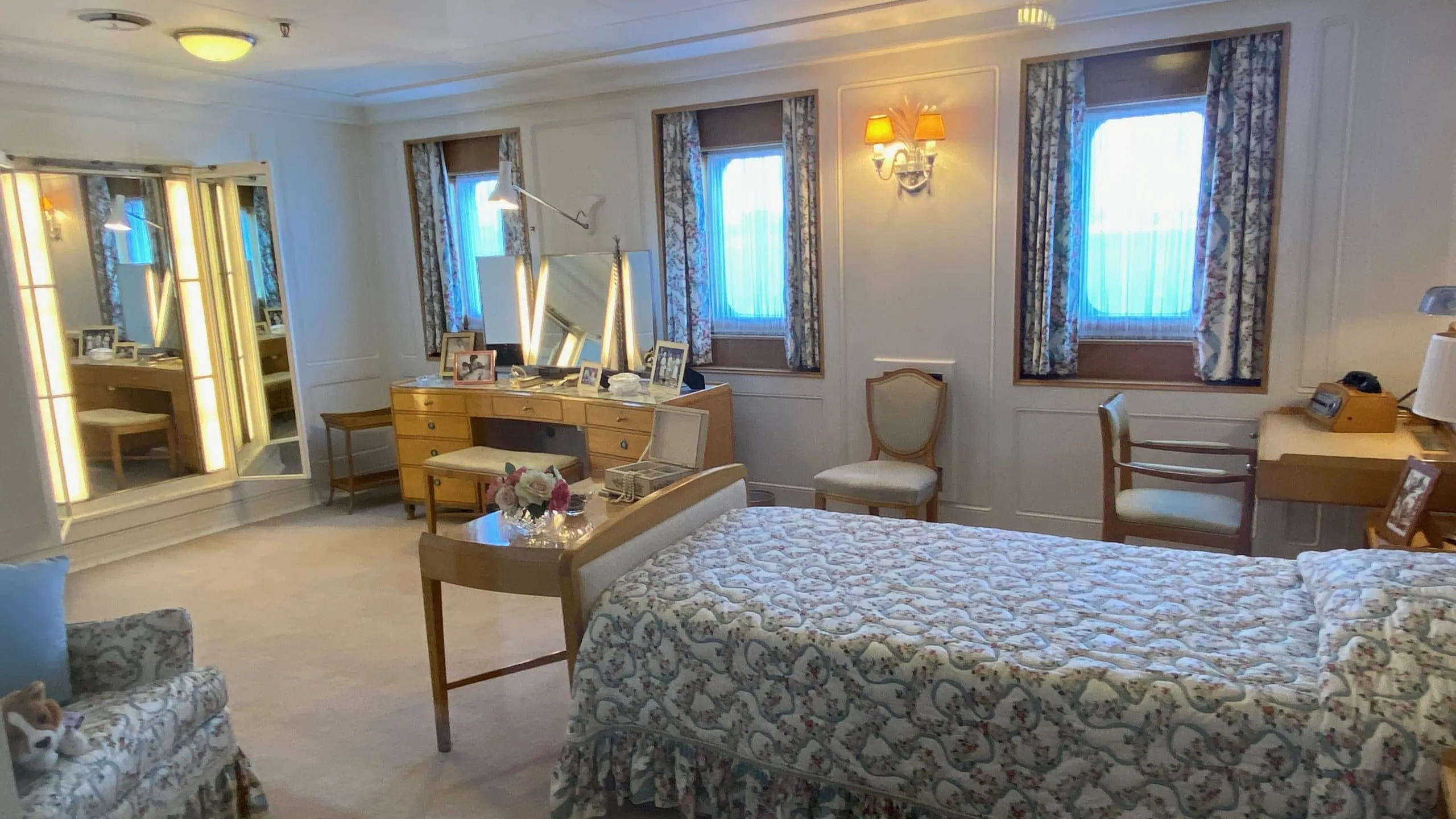
Fun Fact
All the clocks onboard remain set to 3:01 pm, as this was the time Queen Elizabeth left the ship for the last time when it was decommissioned.
After you complete the tour of the multiple decks, make sure to stop in at the Royal Deck Tearoom. They offer standard fare, but also feature some decadent cakes and scones. We enjoyed a G&T and cake in the exact area that Her Majesty and her family spent many an afternoon. Pretty special!
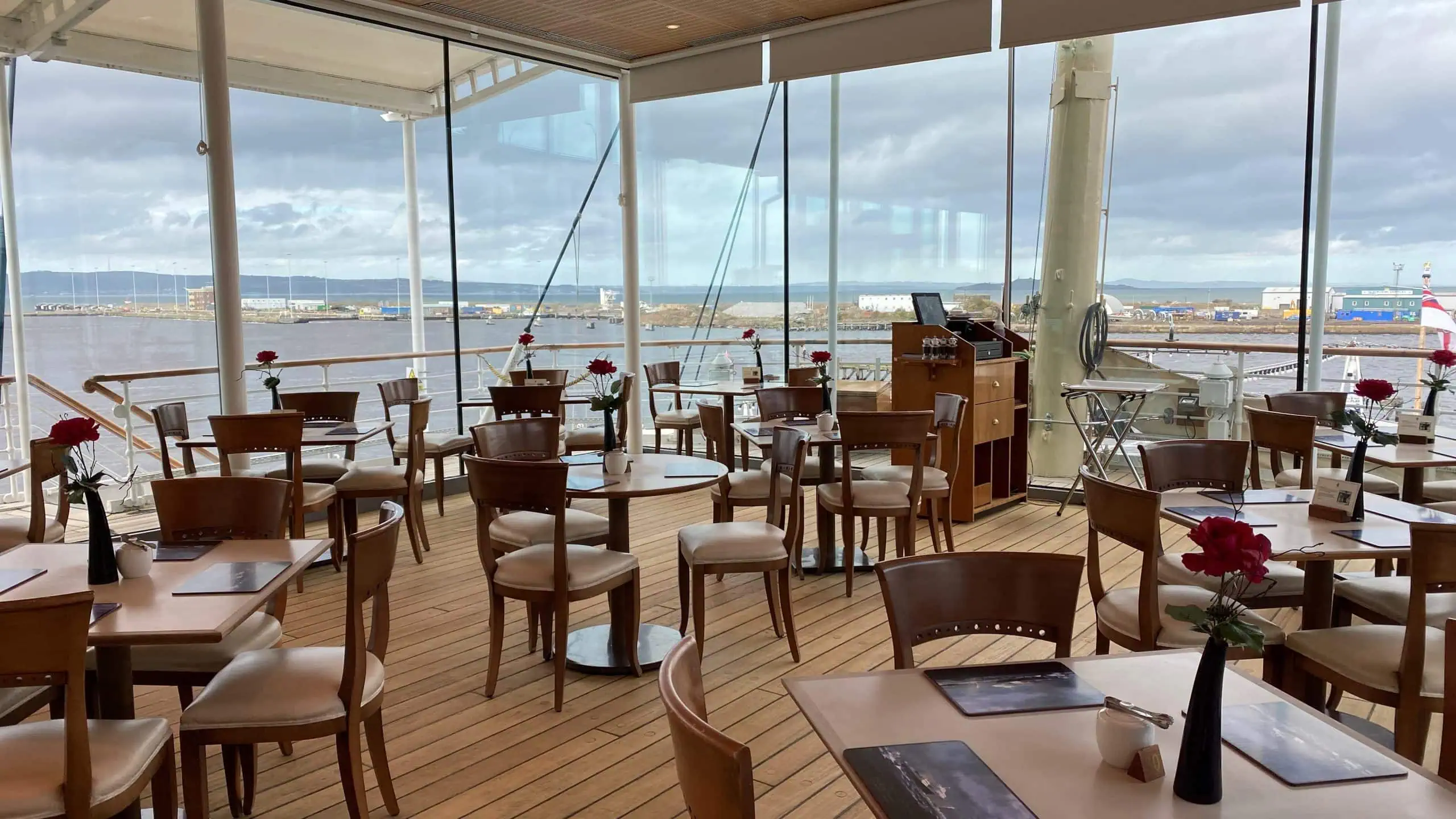
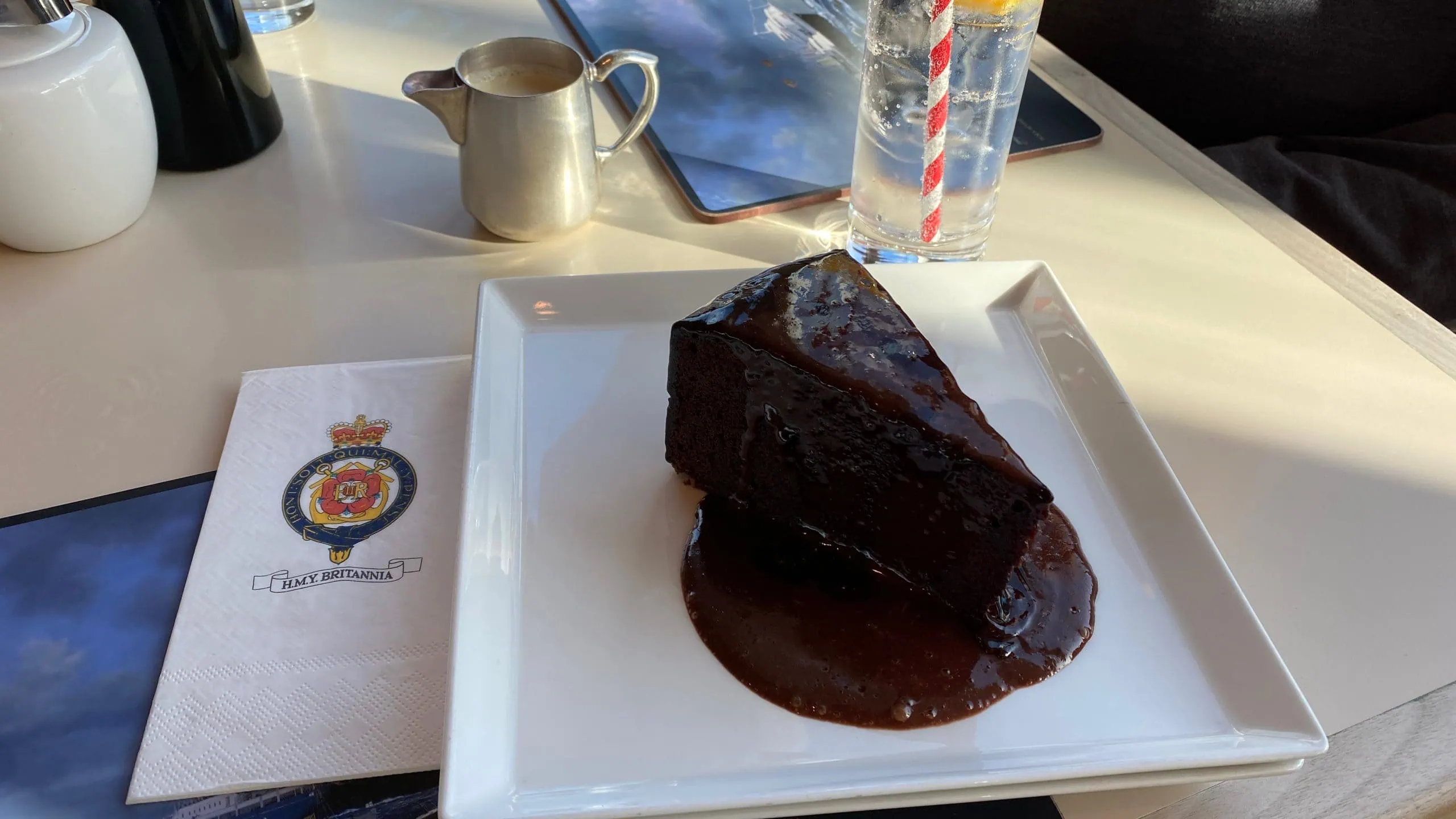
Where To Stay In Edinburgh
Staying in the heart of the city is the best idea to make sure you can get around to all the major sights easily. We stayed in the University section of town at the Ten Hill Place. This was a good property with spacious rooms, friendly staff and walkable to many sights.
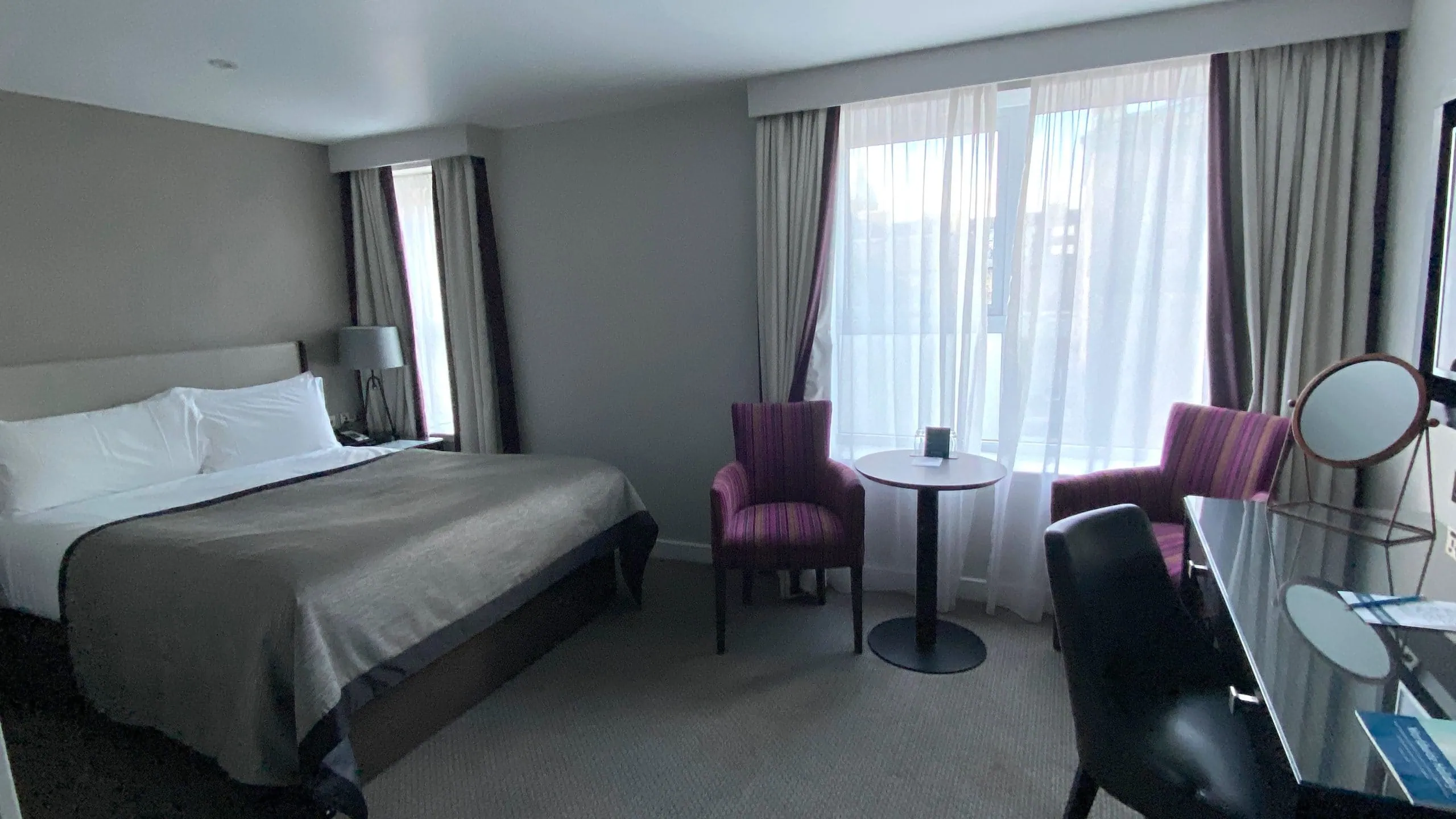
We would also recommend The Radisson Blu Edinburgh City Centre for a fantastic location right on the Royal Mile in the thick of things, and close to the train station. Or Market Street Hotel for modern, luxury rooms at a property that has a rooftop terrace.
Where To Eat In Edinburgh
There is no lack of places to eat and drink in Edinburgh. Here you can find something for everyone’s palate and budget. We enjoyed traditional Scottish food at The Last Drop in the Grassmarket whose location is famous for its executions that took place in the square out front. Our lamb stew was fantastic, and the night we were there had live music.
We also enjoyed the upscale Witchery. The ambiance is very nice with a Secret Garden. And the Beef Wellington that we had was perfectly cooked.
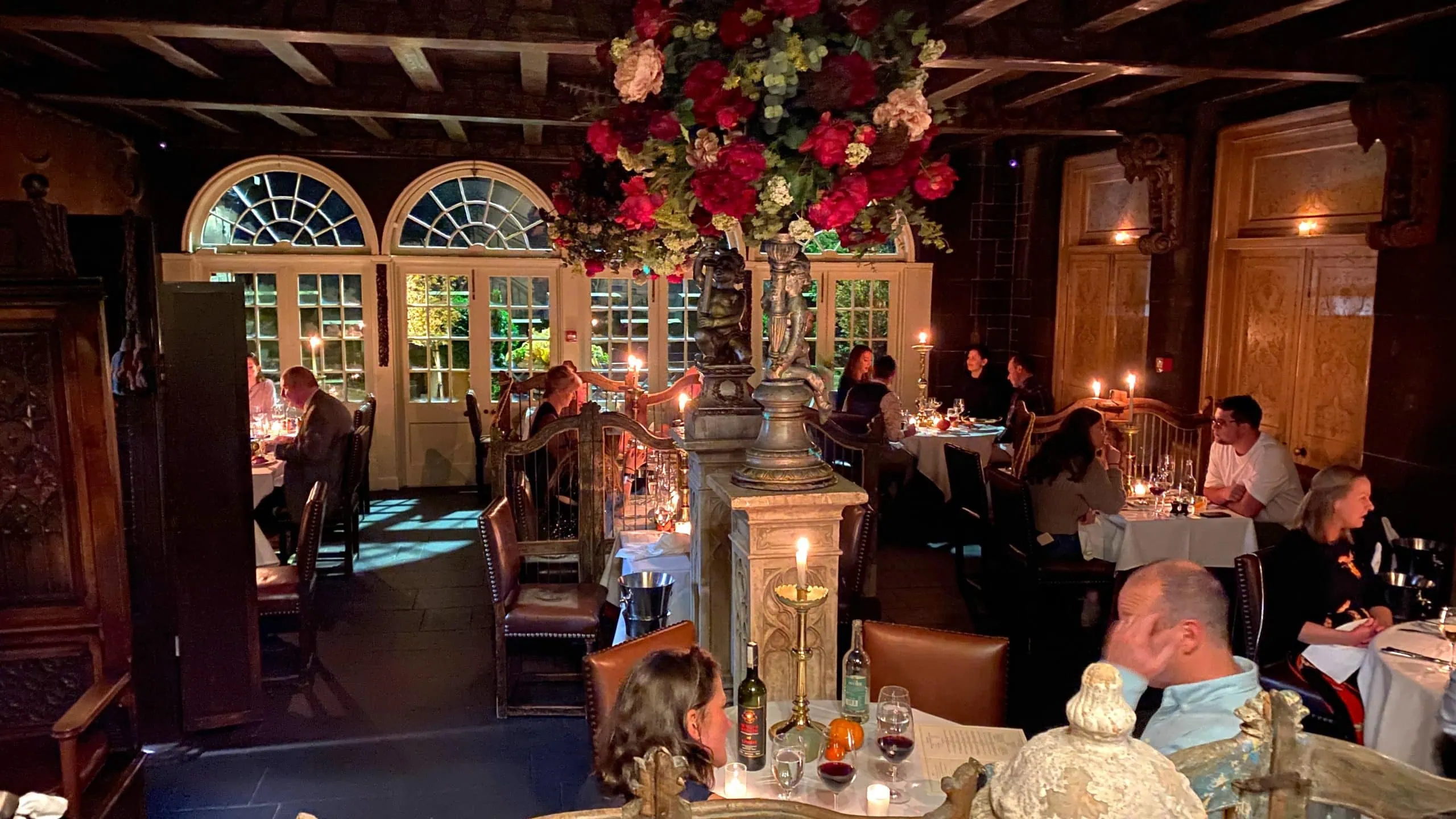
The Final Word…Best Things To Do In Edinburgh
As you can see, there is plenty to do when you visit Edinburgh. It is a fantastic city for tourist sights, just strolling the cobblestone streets or cemeteries and checking out its exciting pub culture. It is a city that we would visit again, and without a doubt, one of the highlights of our trip to Scotland.
Be sure to have a look at our other blog posts that cover some of Scotland’s many highlights, including the Isle of Skye, St Andrews and the NC500.
